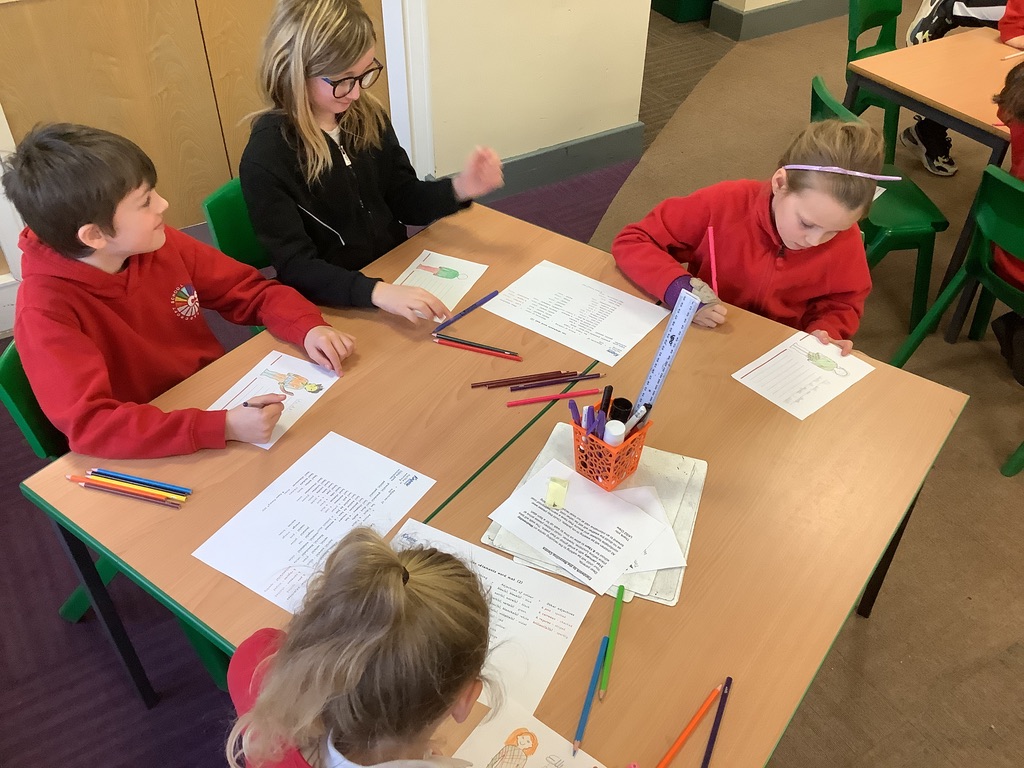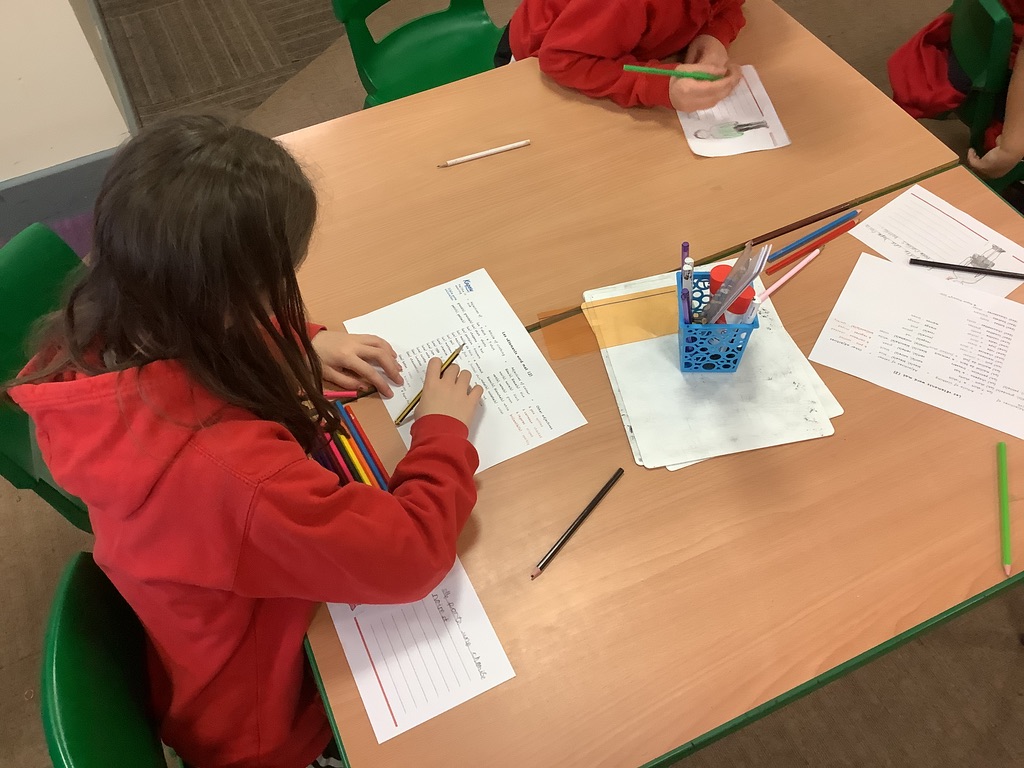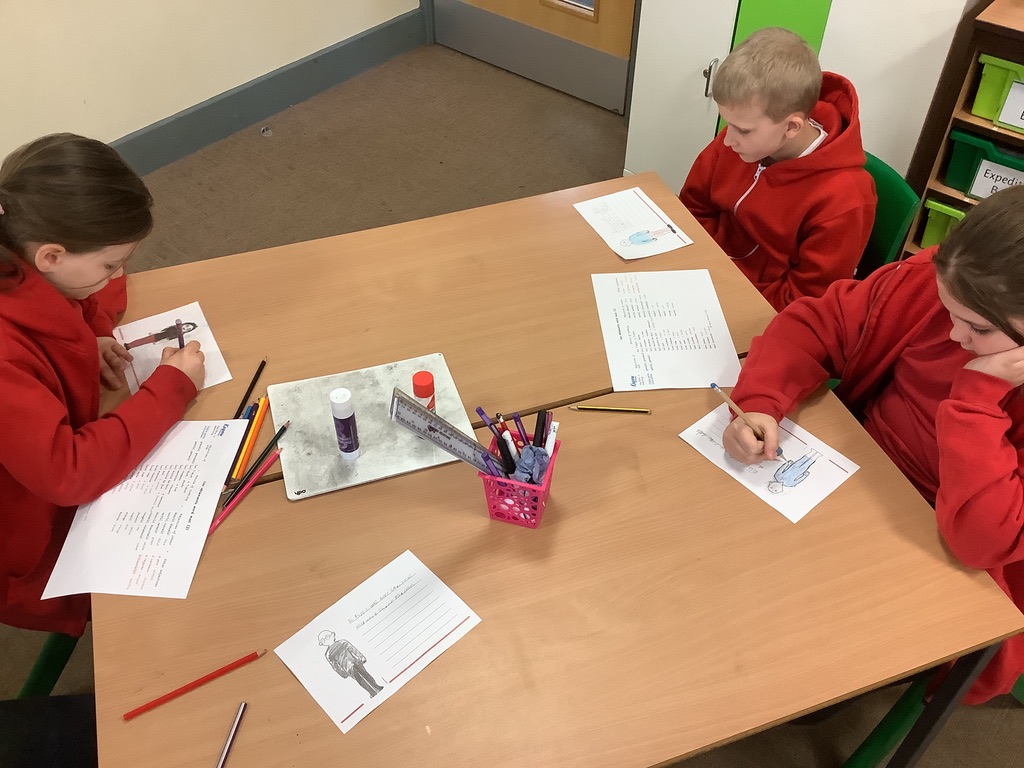Today’s French lesson was filled with fun, as we matched pictures of delicious fruits with their French names! From ‘pomme’ to ‘banane’ we practiced pronunciation and made connections through colourful visuals.




Modern Foreign Language
Today’s French lesson was filled with fun, as we matched pictures of delicious fruits with their French names! From ‘pomme’ to ‘banane’ we practiced pronunciation and made connections through colourful visuals.




This week we have been looking at seasons and becoming more confident with dates in French. We started by looking at the four seasons, practising our pronunciation, before discussing which season each month of the year falls into.

We then spent time improving our speaking skills, as well as our listening and understanding skills, by asking our friends what their date of birth is. We used our knowledge organisers to help us construct the correct French translation to record their birthdays.


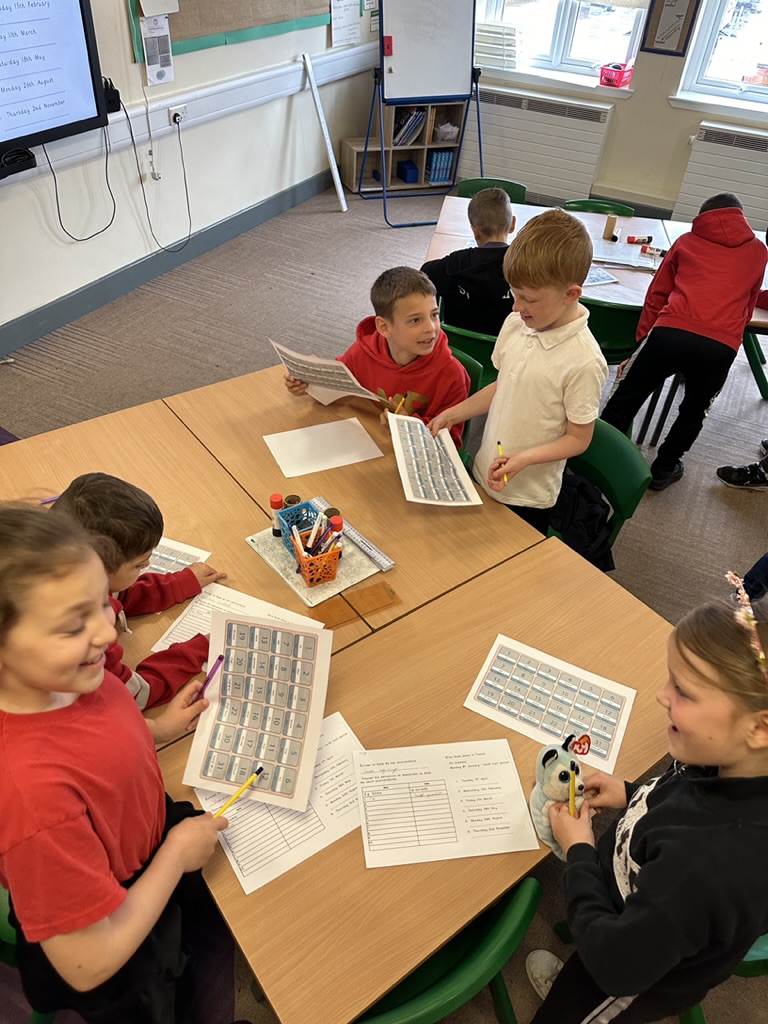
We then utilised our knowledge organisers again to translate a range of dates from English to French which supported practising to write in French.
We began a new unit by looking at life in a French school. We watched a video clip to help identify any similarities and differences between school life in France and the UK.
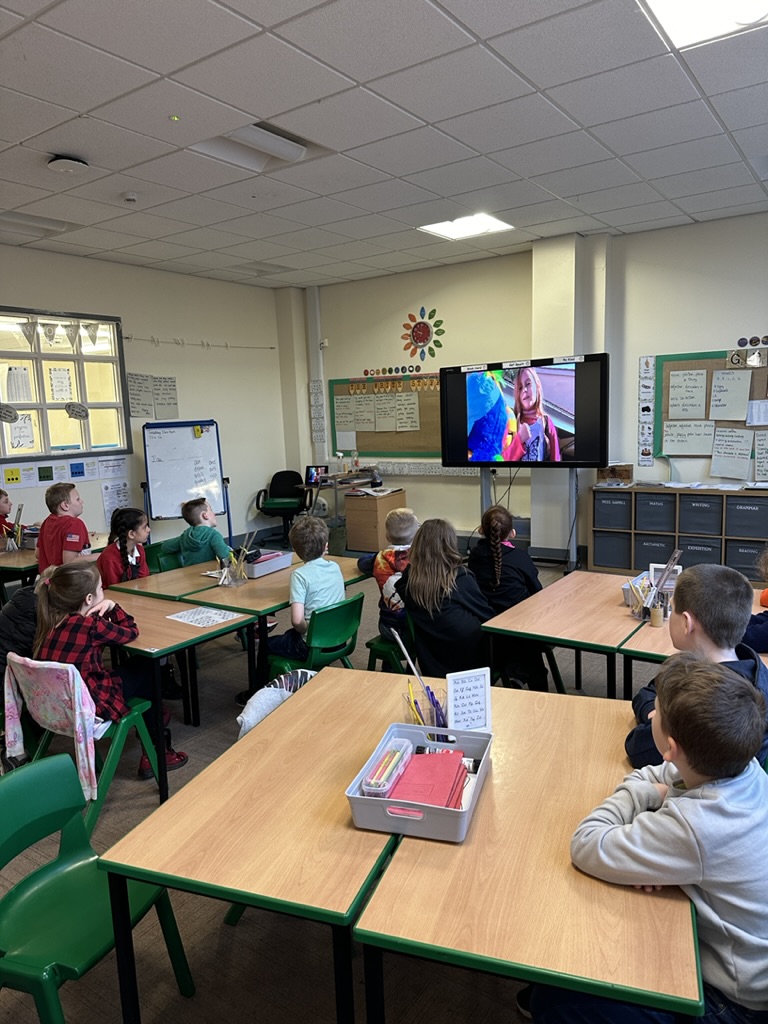

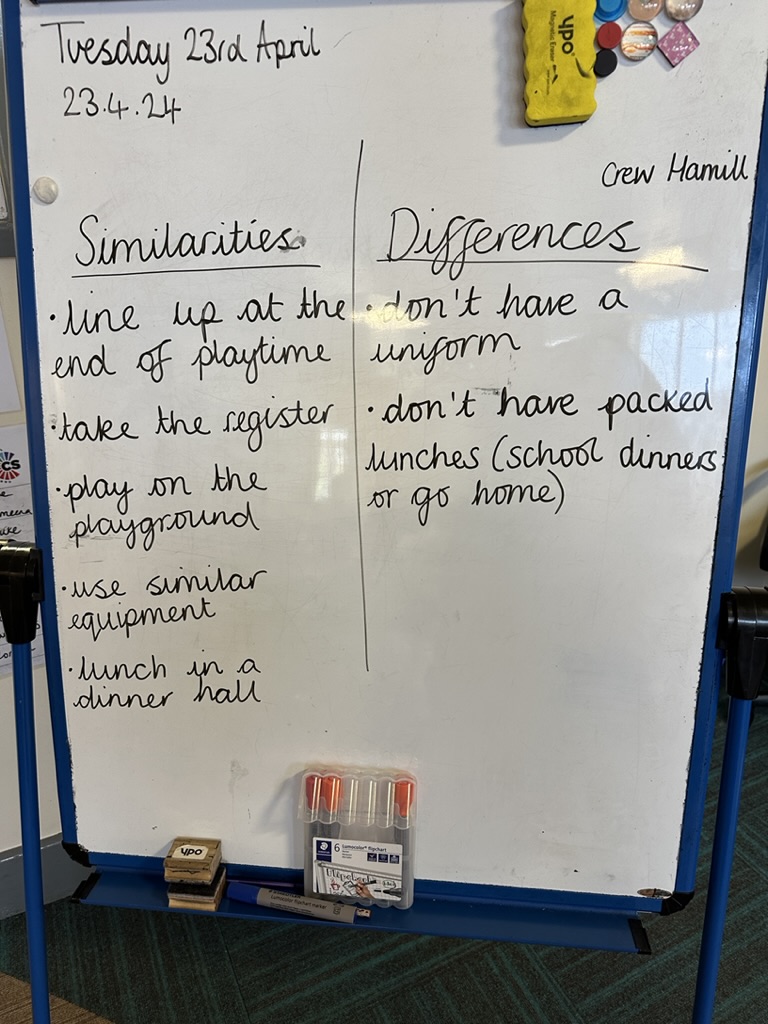




We then looked at new vocabulary related to instructions given in the classroom. We practised our pronunciation and understanding by creating signals to match the French pronunciation. We then worked together to match the symbols to the correct written phrase for each instruction.
To finish, we played a game of Jacques a dit (a French equivalent to Simon Says). We had to listen carefully to the instruction given to us in French before showing either a gesture or doing that action depending on whether it was prefaced with ‘Jacques a dit’ or not.
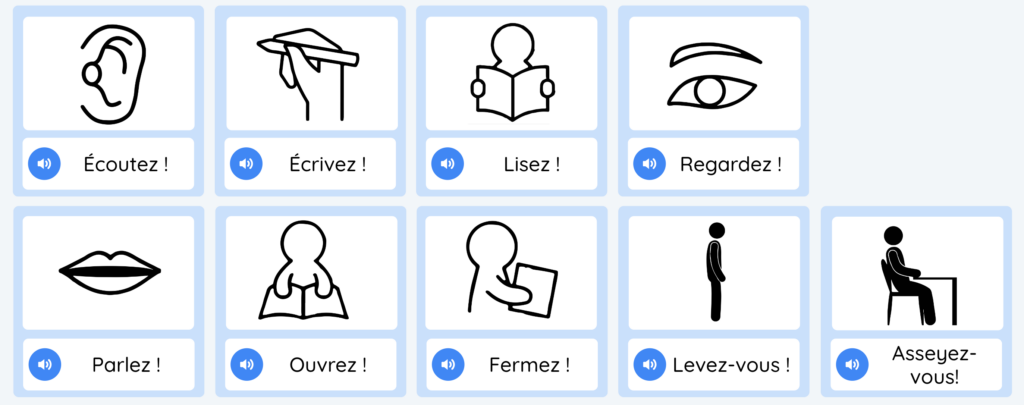
We have been looking at months of the year in French. We began by trying to find the matching pair to the word cards on our tables using a silent conversation protocol. One person had the English word and the other person had the French translation for months of the year. We discussed how we knew we had found the correct pair and we used our existing knowledge as well as identifying cognates for some of the months.


We watched a video and listened carefully to each of the months in French. If we heard our birthday month we had to stand up.
We then used the iPads to research various different important events that happen in France. We had to find out the month that the events usually happen and write this down using the French spelling. Just like days of the week, French months do not need capital letters at the beginning.
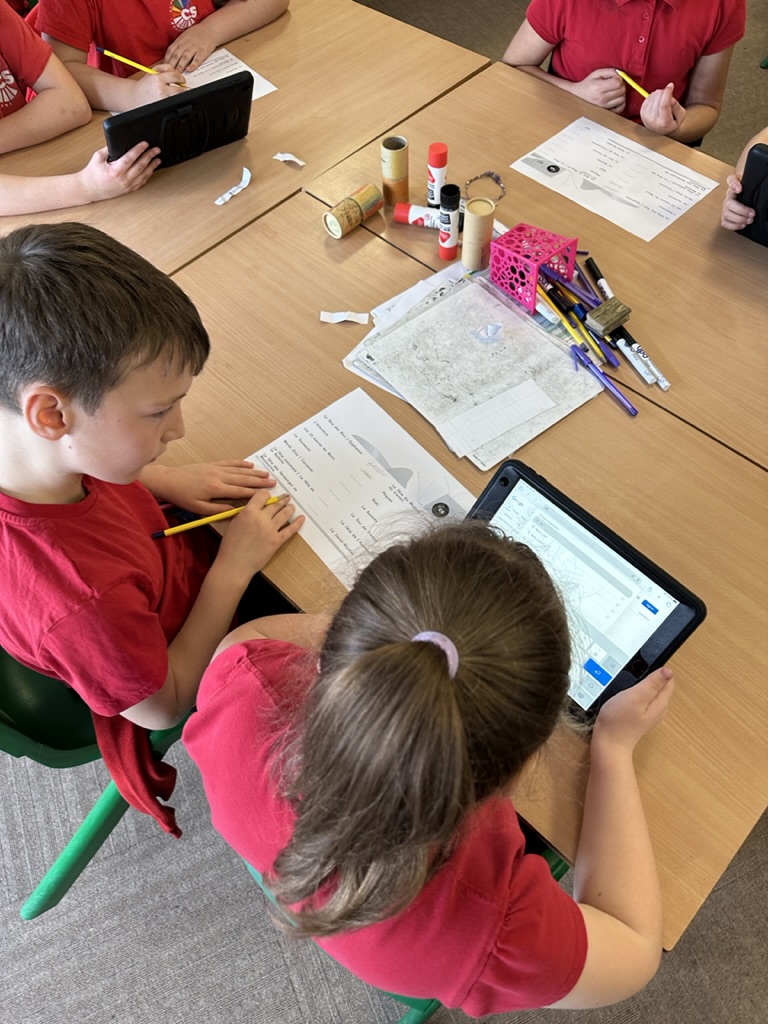
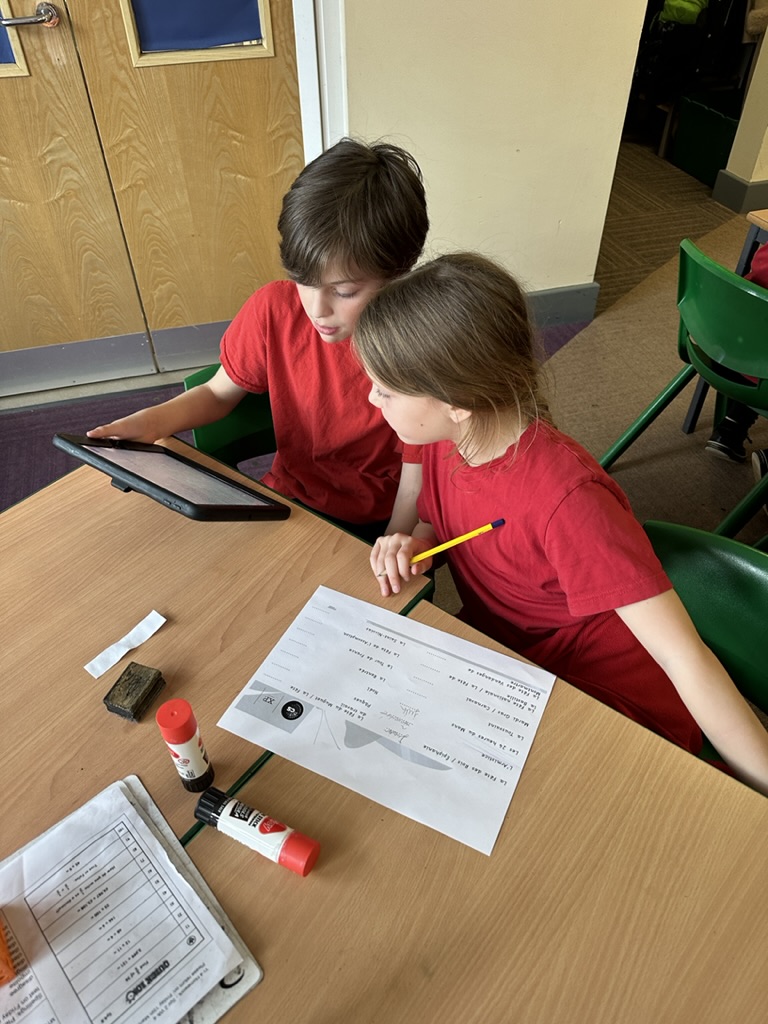

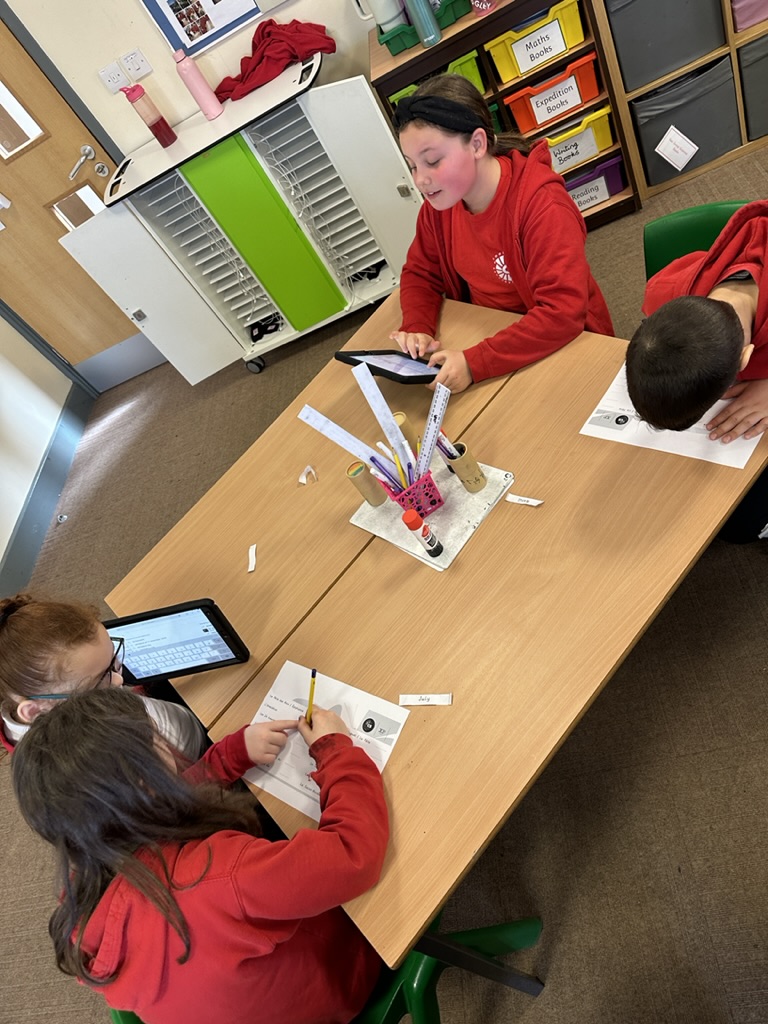
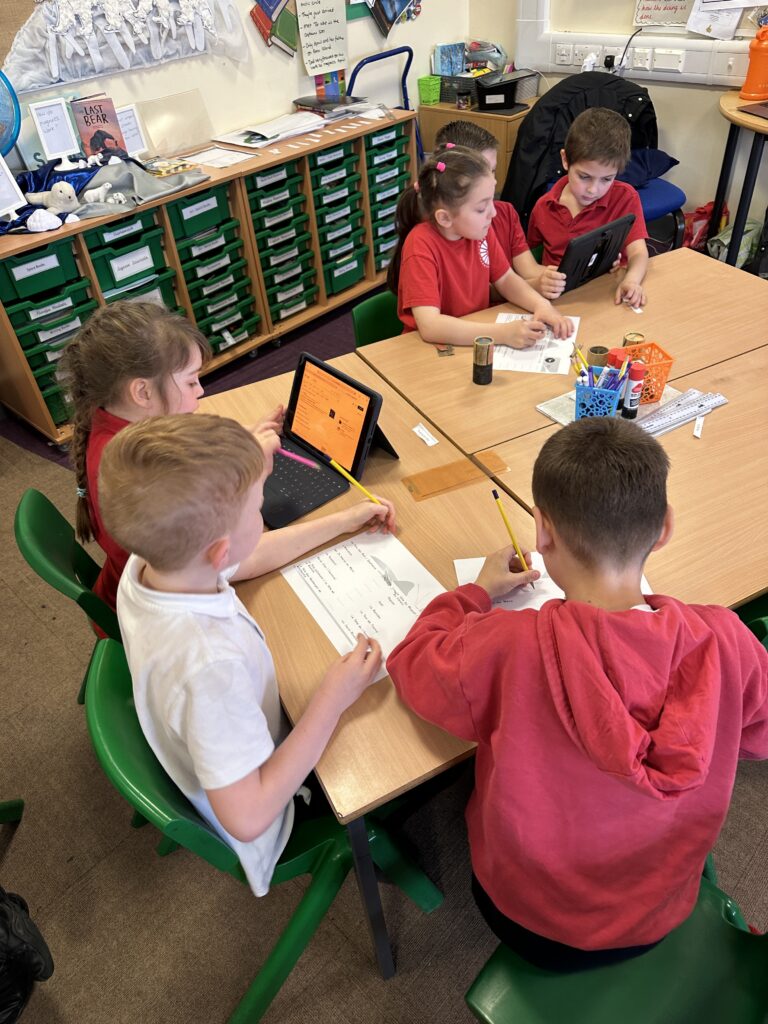
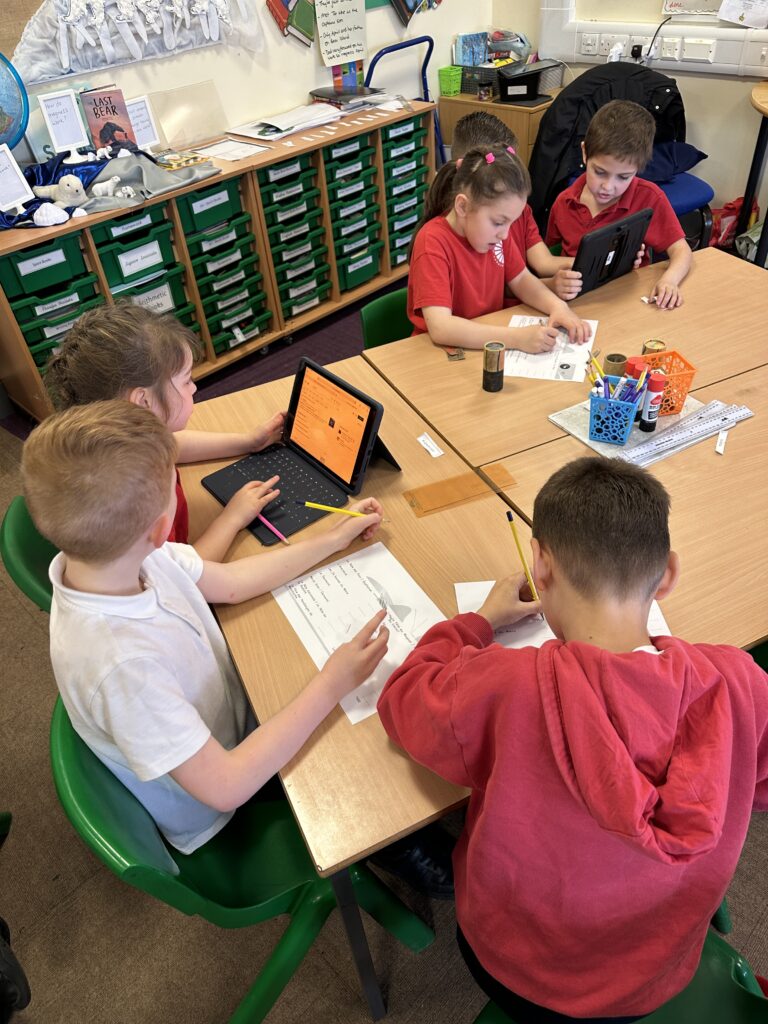
We finished off by learning how to ask and answer ‘when is your birthday?’ in French. We discussed with our partners and then shared the information we had found with the rest of the crew and confirmed whether this information was correct.

During this lesson, we investigated French days of the week. We looked at the written days of the week and tried to identify which day was which based on any clues we could get from the spelling. We found some slight similarities in terms of some spelling, initial letters and pronunciation when they were said out loud to us.
We noticed that, unlike in English, the days of the week are not given capital letters in French. So that we could practise pronunciation and order, we listened to and began to learn a days of the week song set to a familiar tune ‘Camptown Races’.

We finished by looking at the French translations for yesterday, today and tomorrow. We practised our pronunciation by using sentence stems to create conversations in pairs.
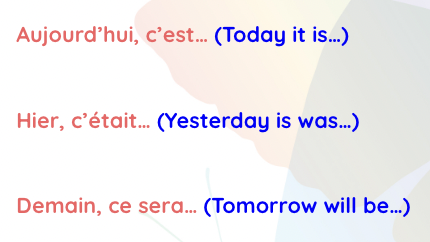
We have been looking at learning French numbers 1-31. From our previous French learning we were quite confident with numbers up to 12 and so we spent time looking at the written words for numbers 13-31 as well as practising our pronunciation.
We then had a go at doing simple mathematics using only French numbers. We had to work together to work out the numbers we needed to add/subtract before then working out the answer and giving the answer in French. This really got us thinking!
During this lesson, we used our knowledge of French numbers up to 12 to play French outdoor games on the playground! We discussed the French for common phrases such as your turn, my turn, winner, and miss a turn before heading out!
First, in small groups we had to use a diagram to draw out our game area. This game ‘la marelle’ was similar to hopscotch. We used chalk to draw out the game area before taking it in turns to throw the rock to a number. We had to call out the number 1 in French before skipping to the end of the grid ‘le ciel’ (the sky), coming back to ‘la terre’ (the earth) and collecting the rock to pass on to the next person, saying à toi (your turn). The next person then had to throw the rock on to the next number and repeat the same process. If the player did not roll the rock onto the correct number they had to shout ‘manque’ to show they were missing a turn. The winner ‘gagne’ was the first person to accurately throw the rock to number 10 and move along the game area to get to ‘le ciel’.
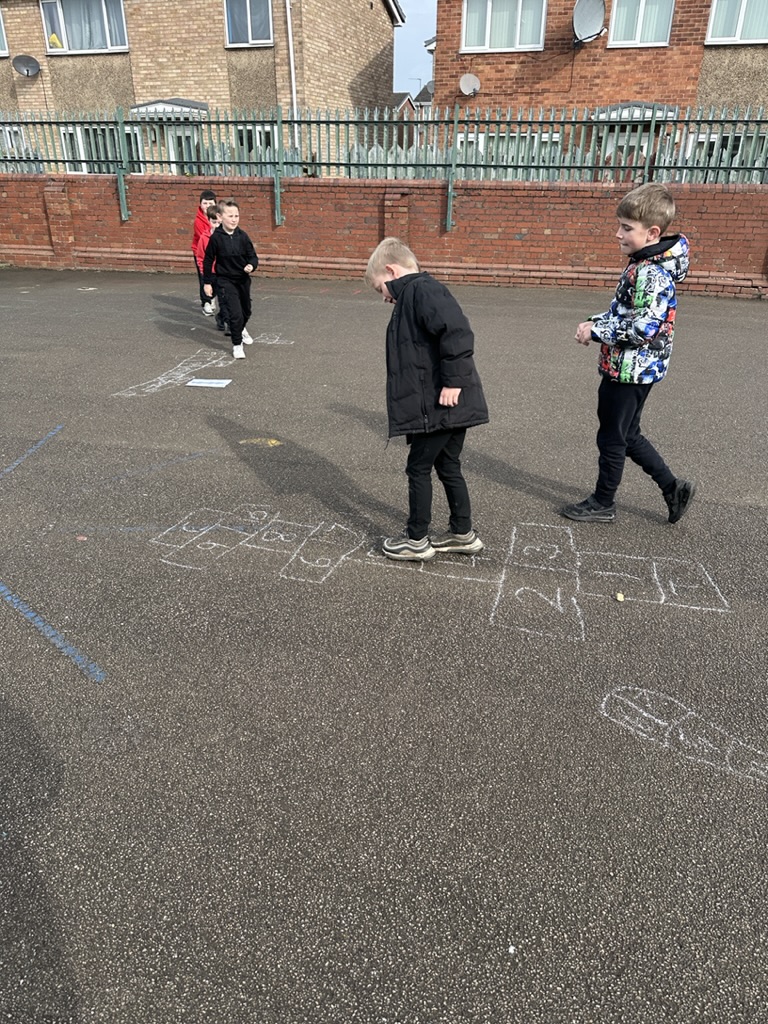


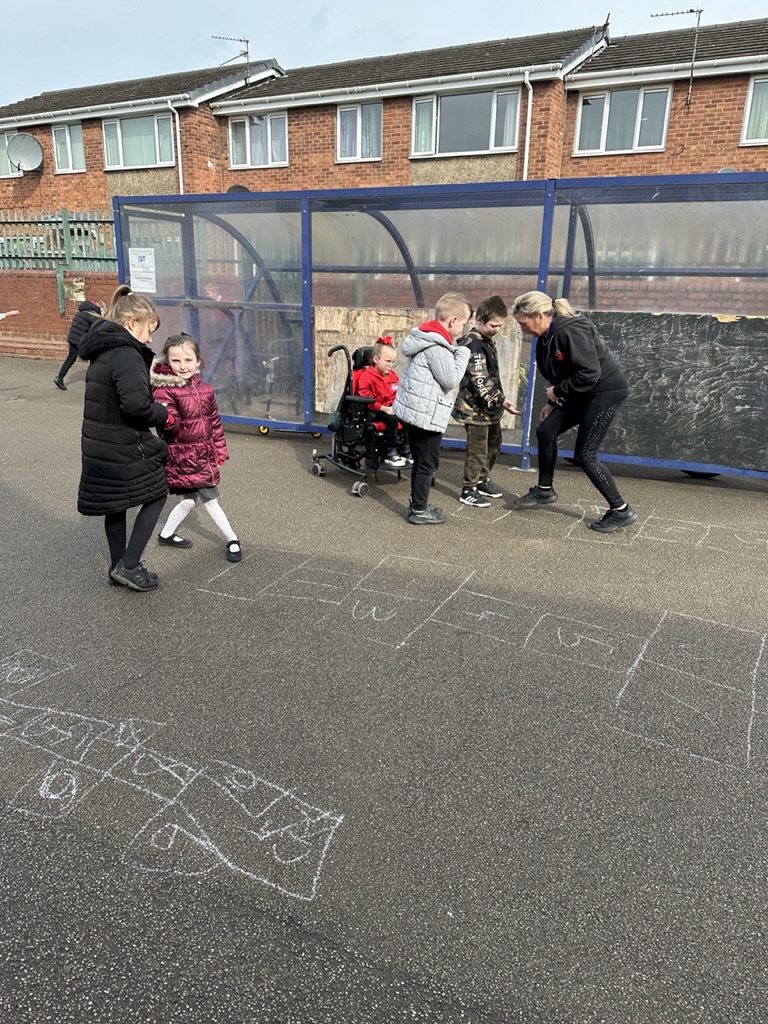
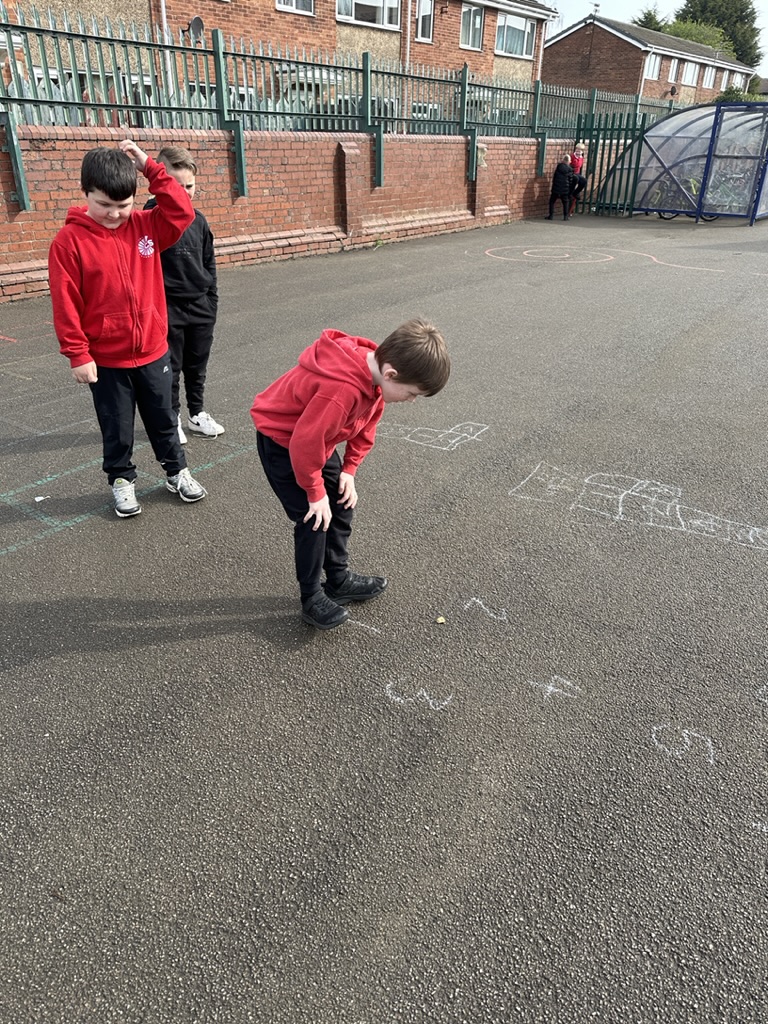
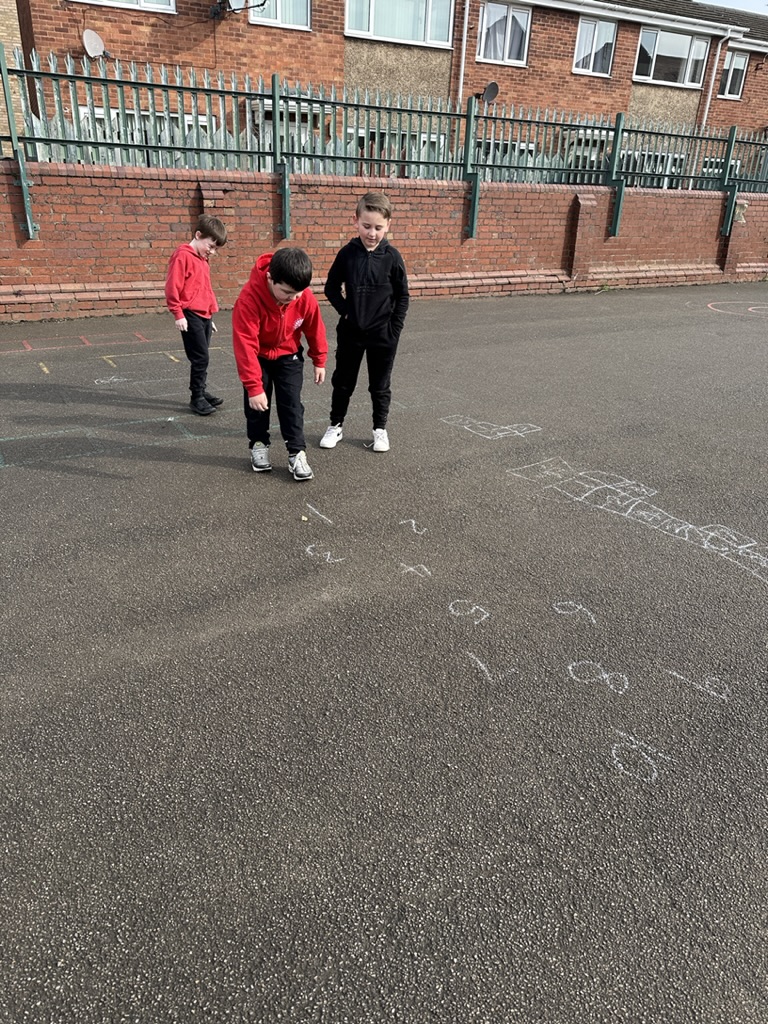
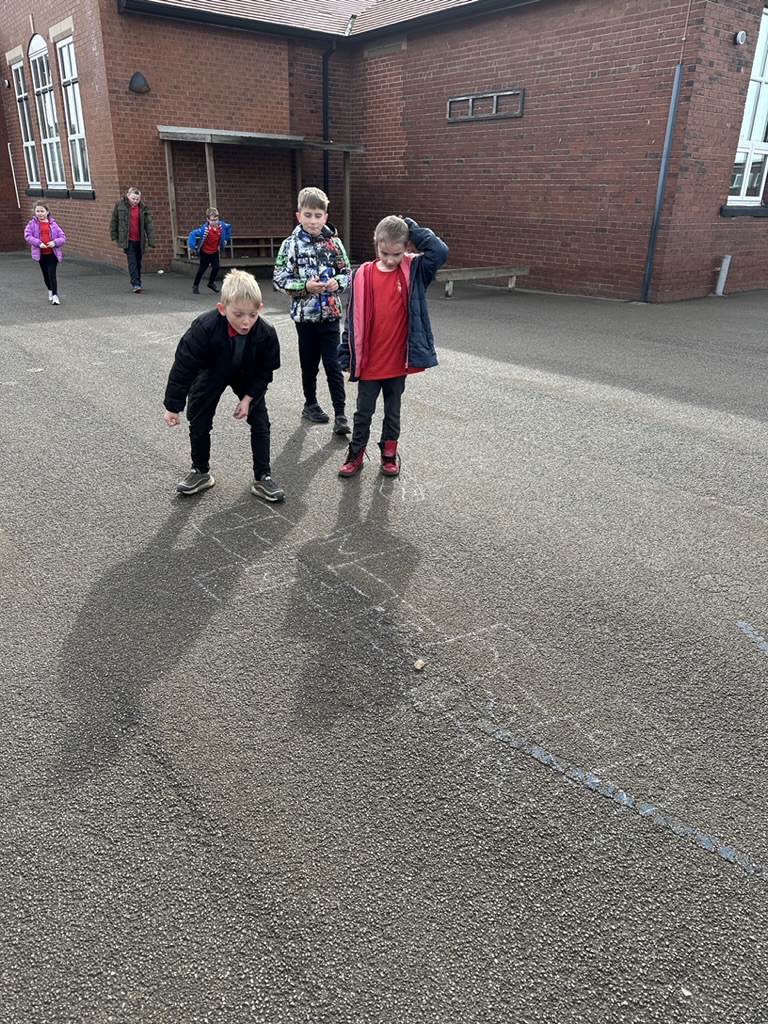
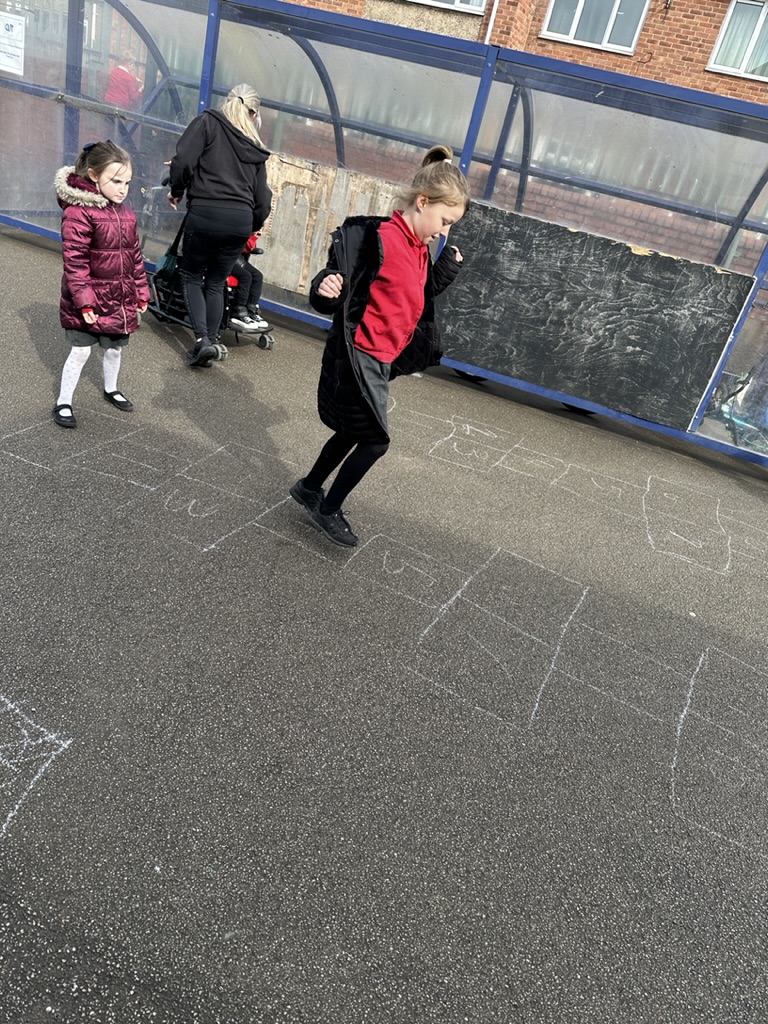
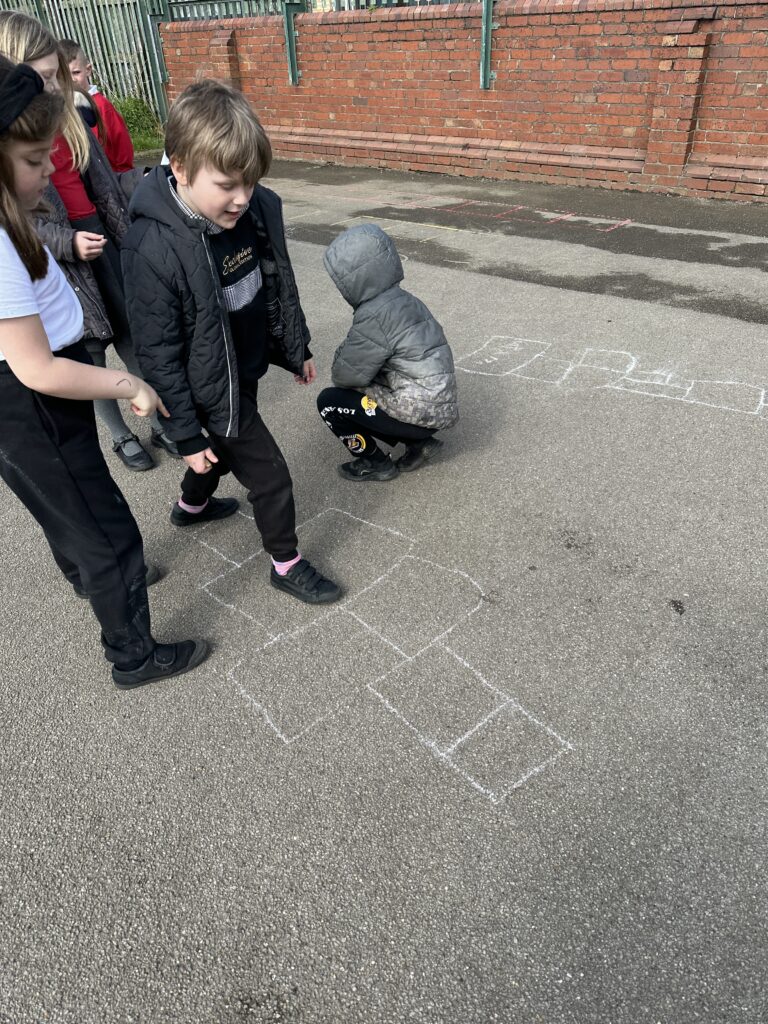
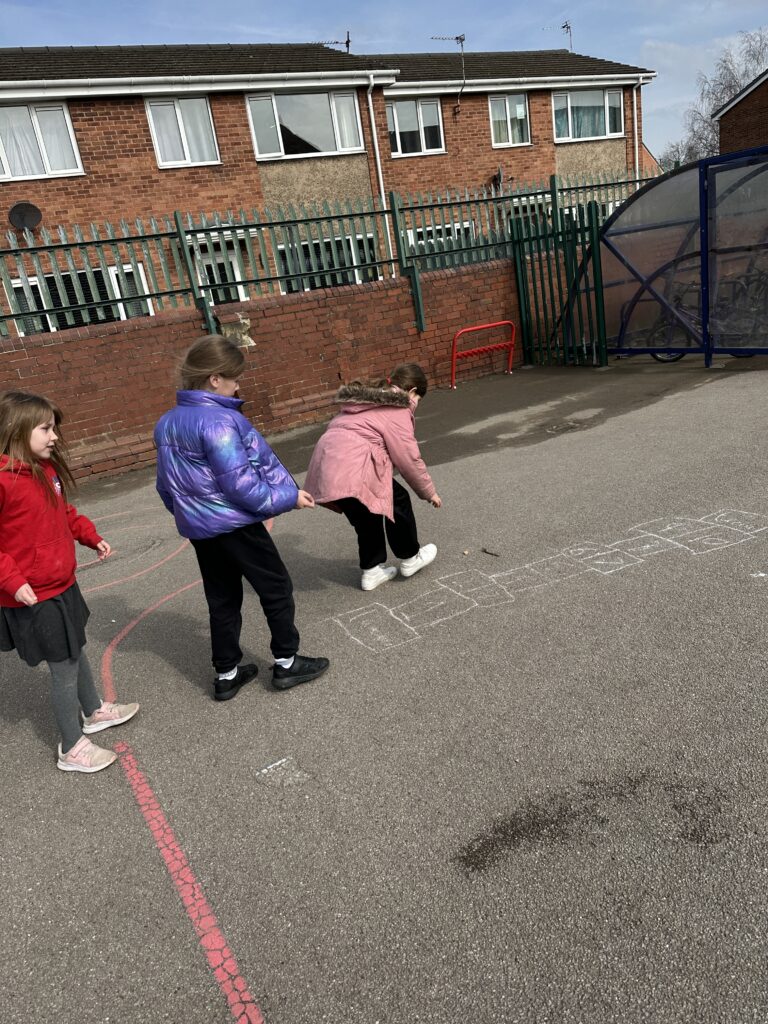

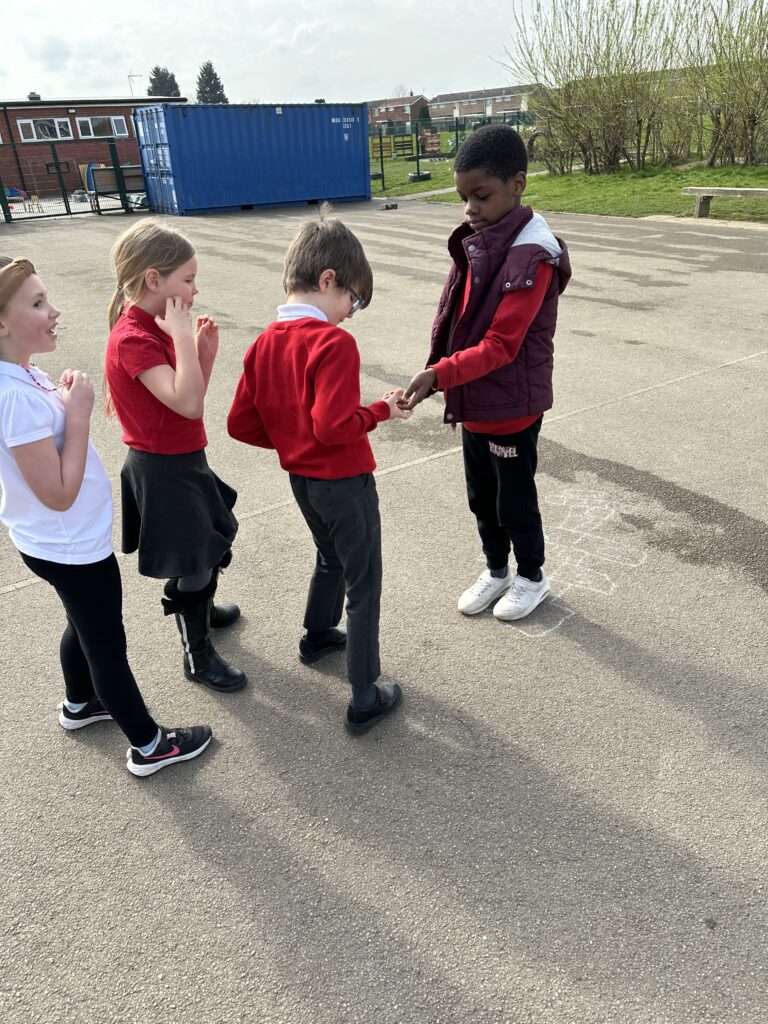

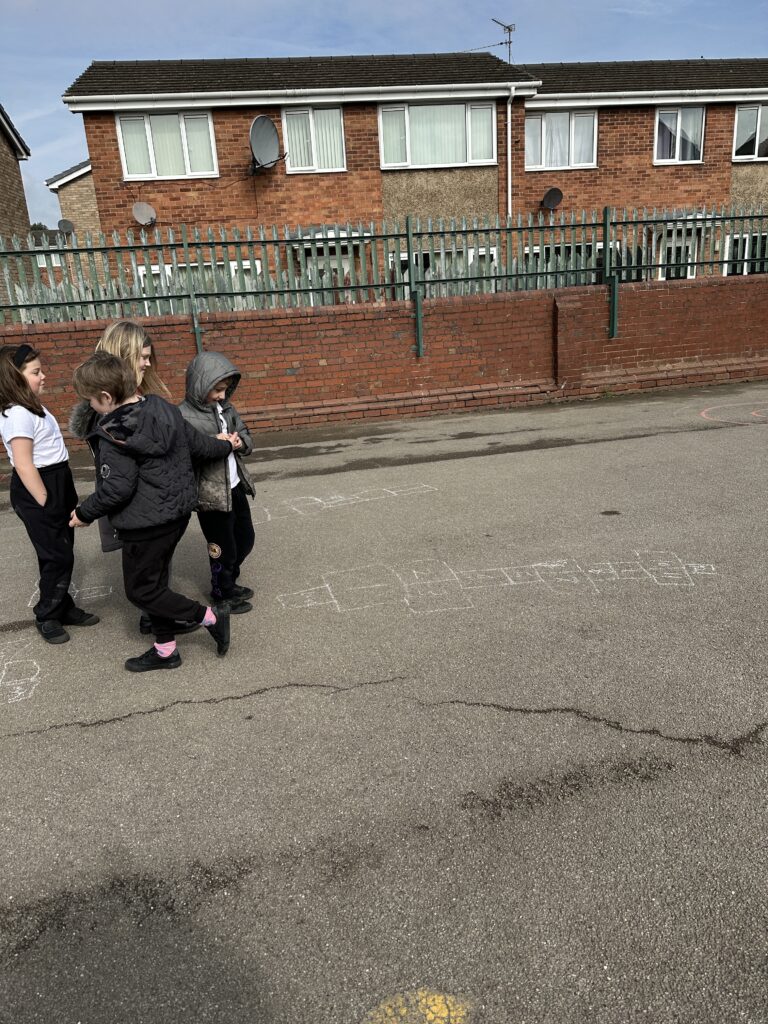


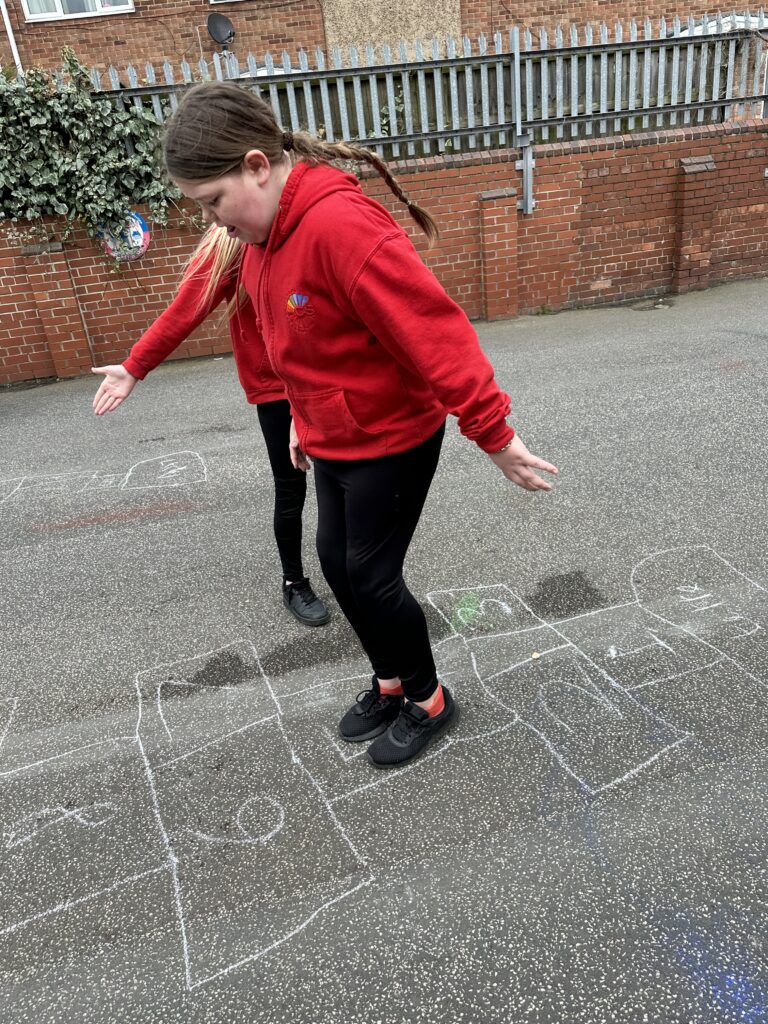
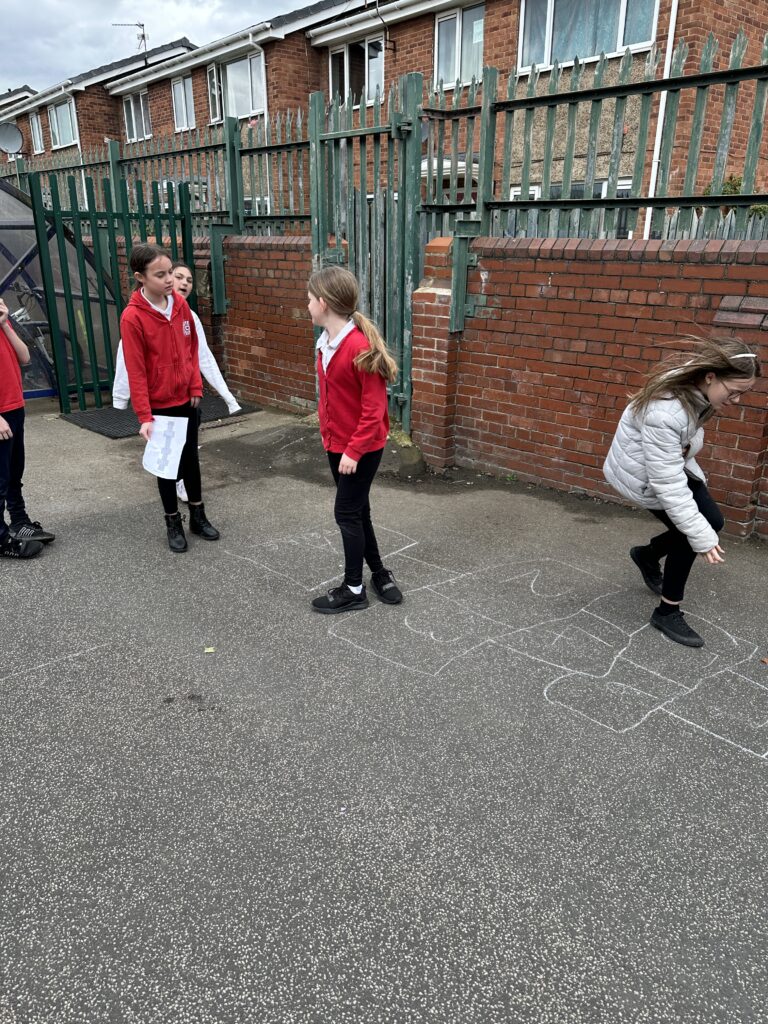

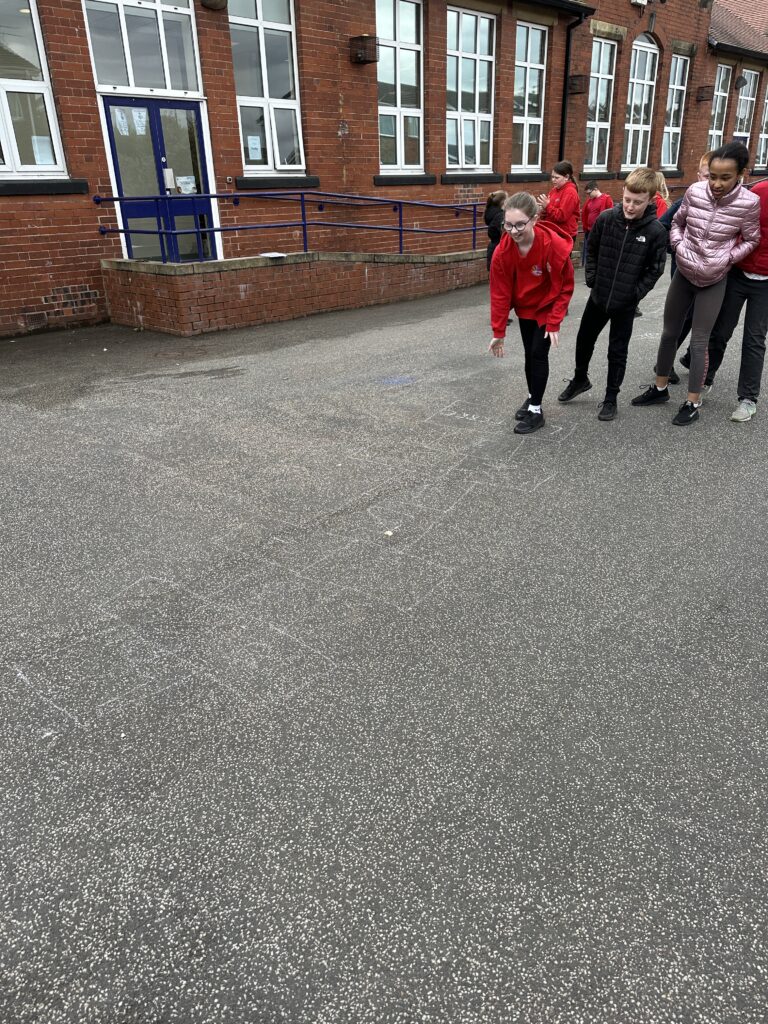
This lesson we were looking at the skill of being able to read numbers 1-12 in French.
We used word cards for the numbers 1-12 to try and put them in the correct order.
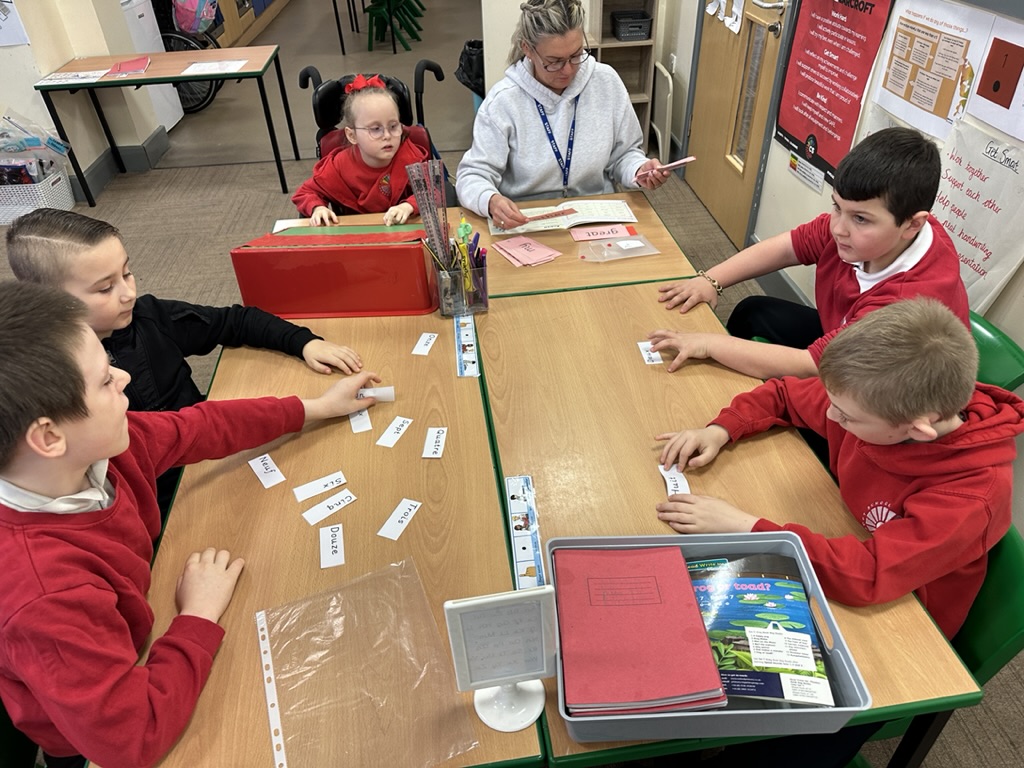
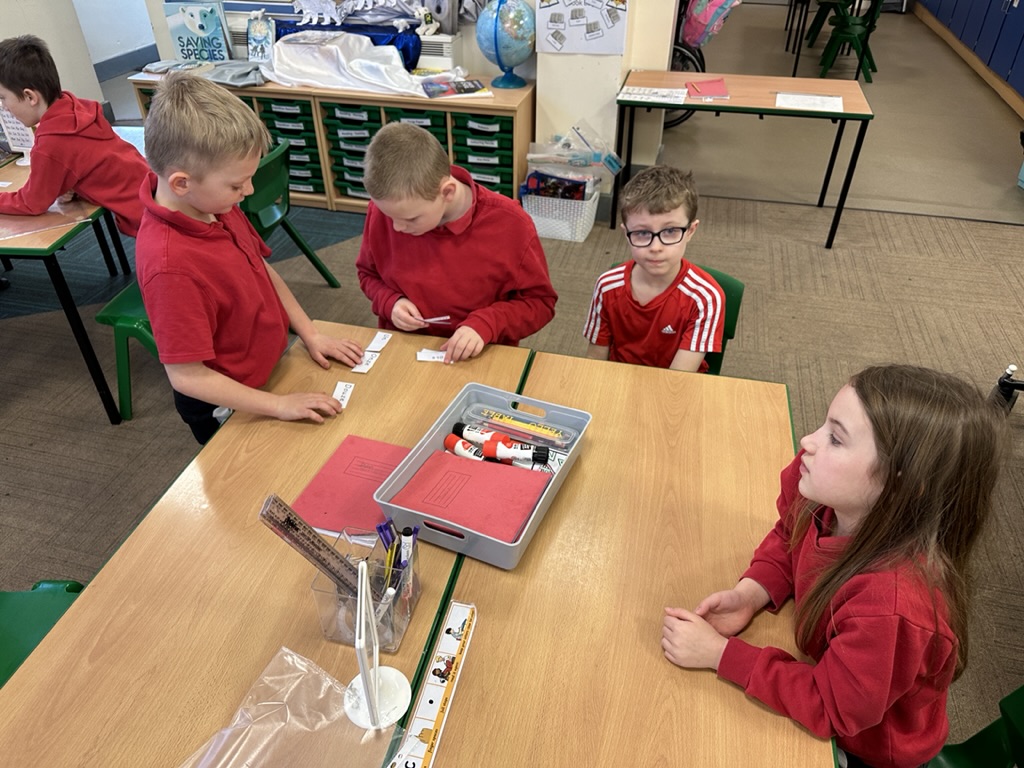
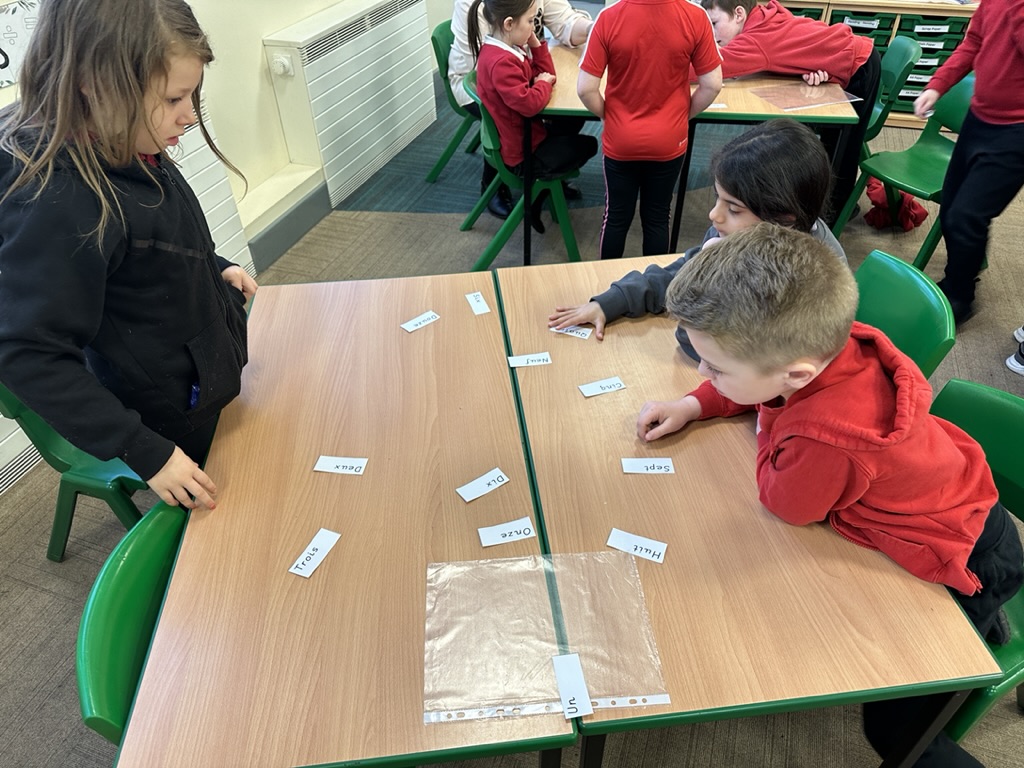
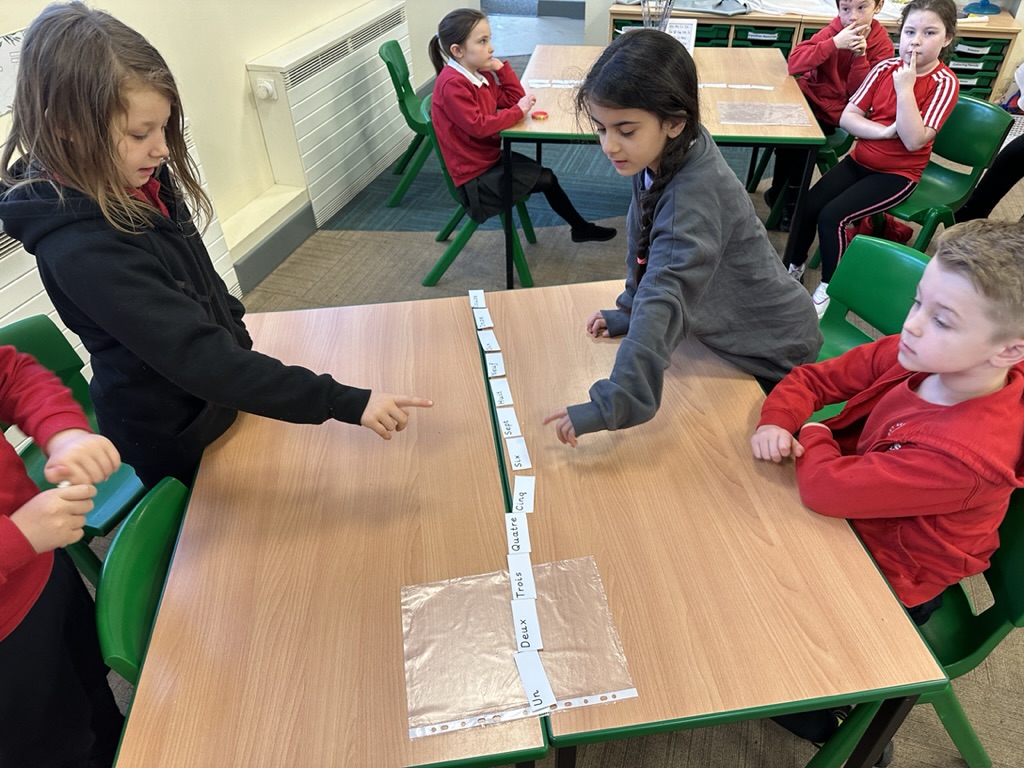
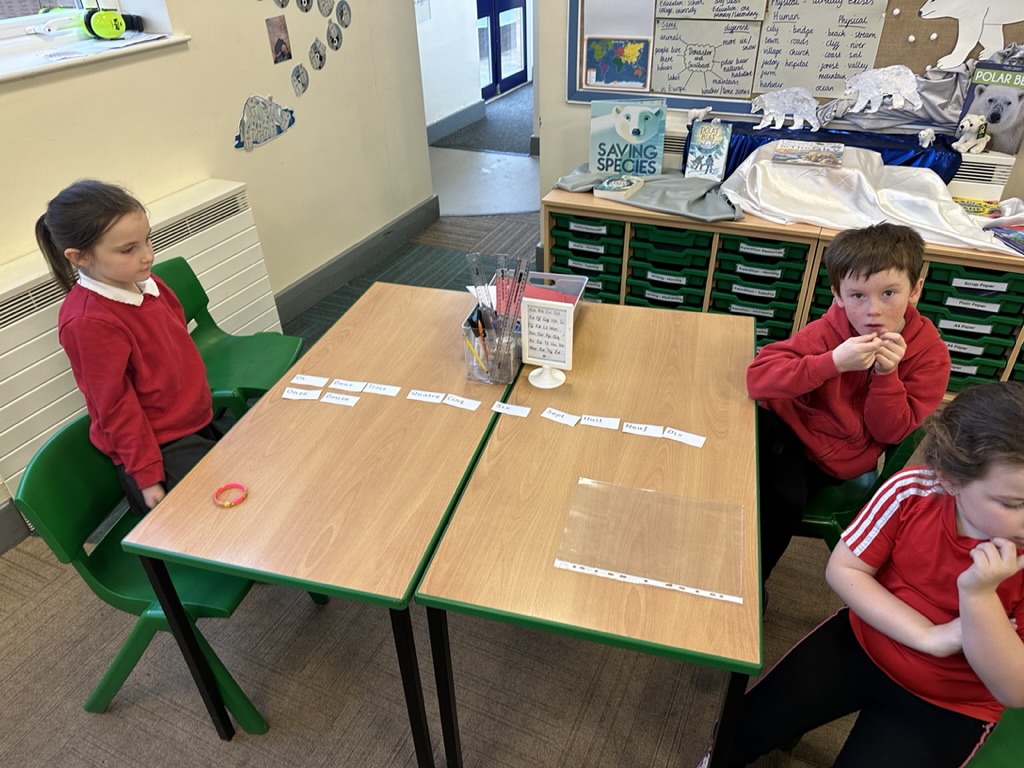
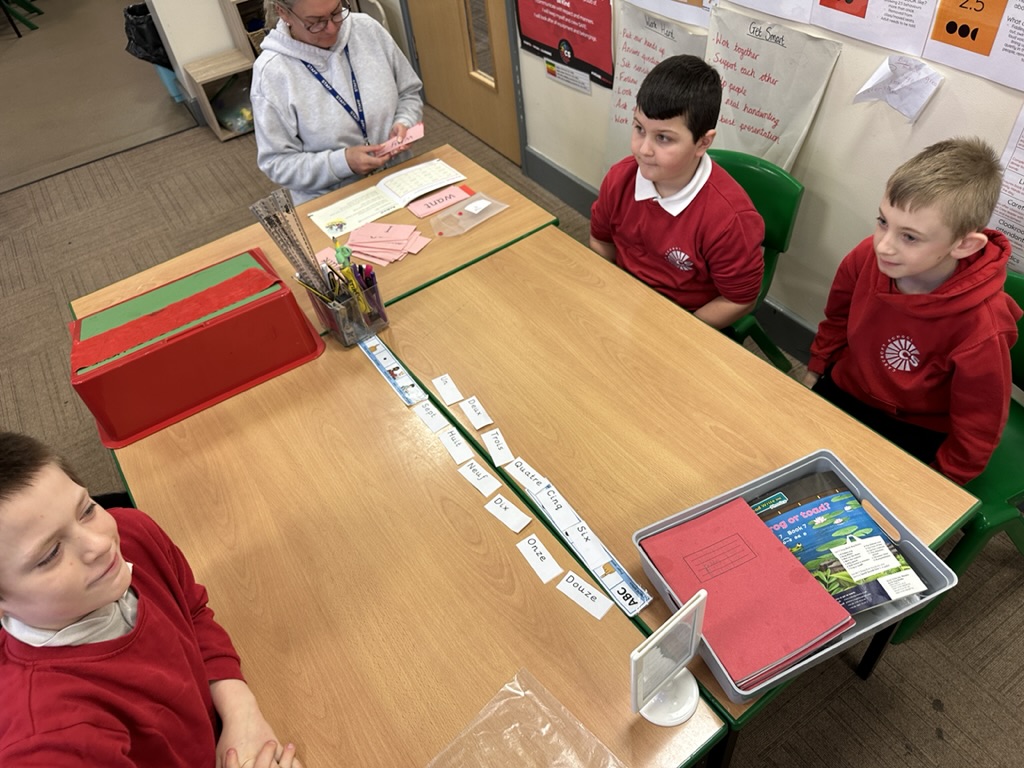

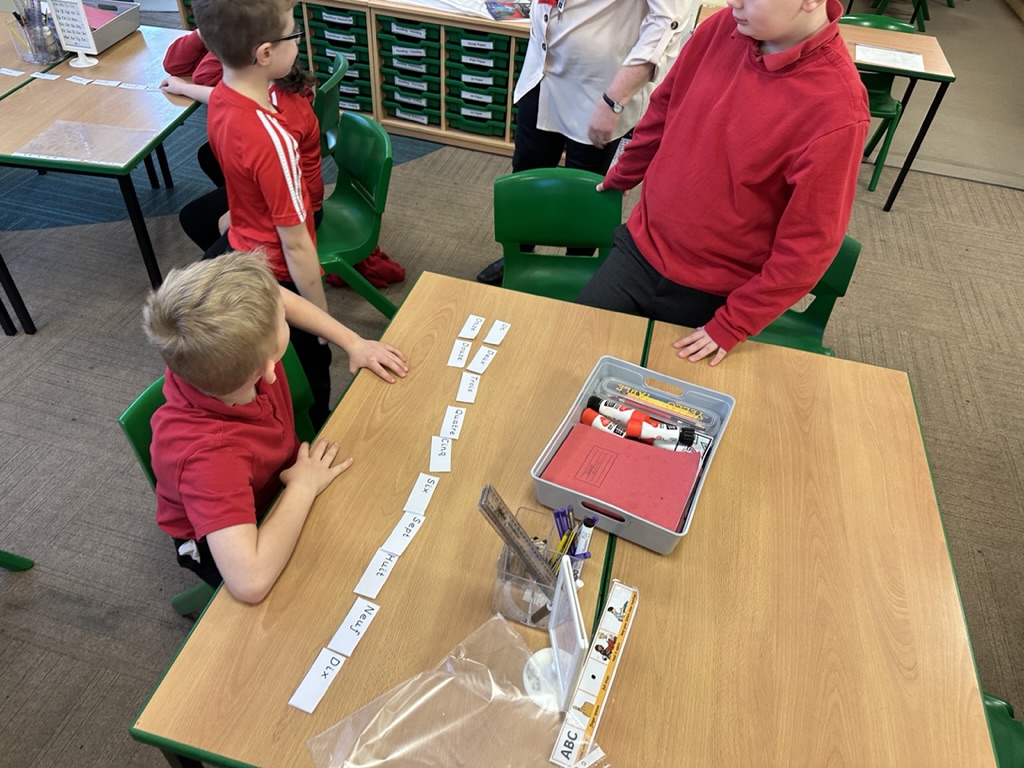

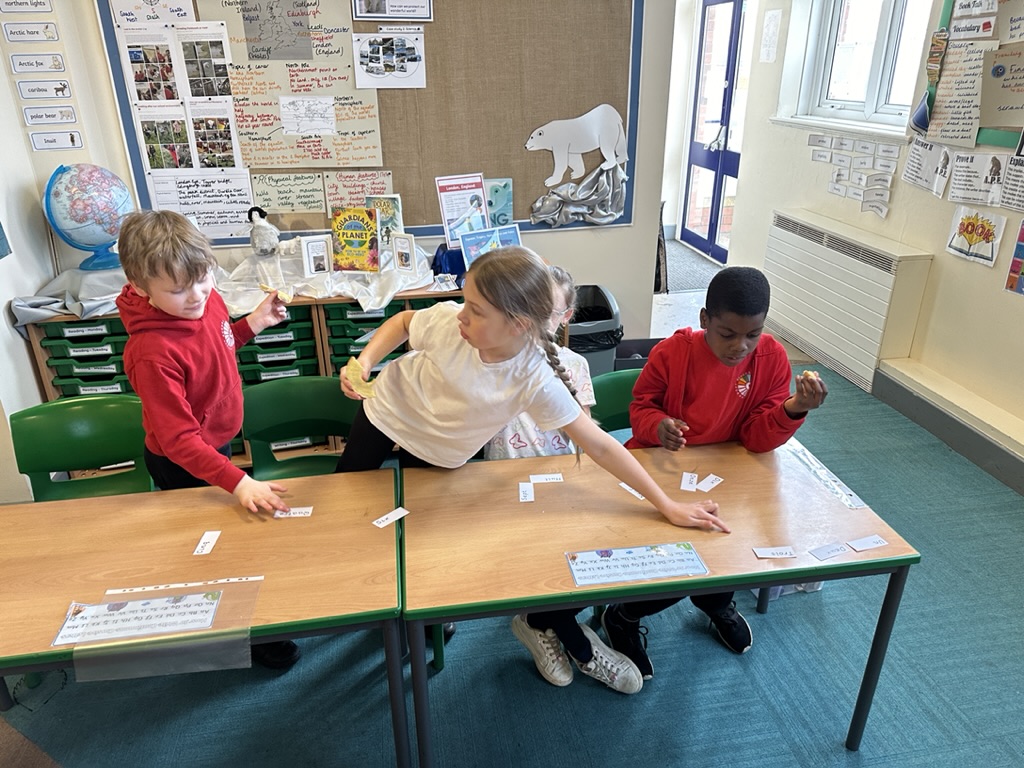
We then discussed how to talk about and ask ‘how many?’ in French. We practised our pronunciation and understanding by turning over unknown picture cards and asking ‘Il y a combien?’ after counting in French, our partner then had to find the corresponding written number card to create a pair.
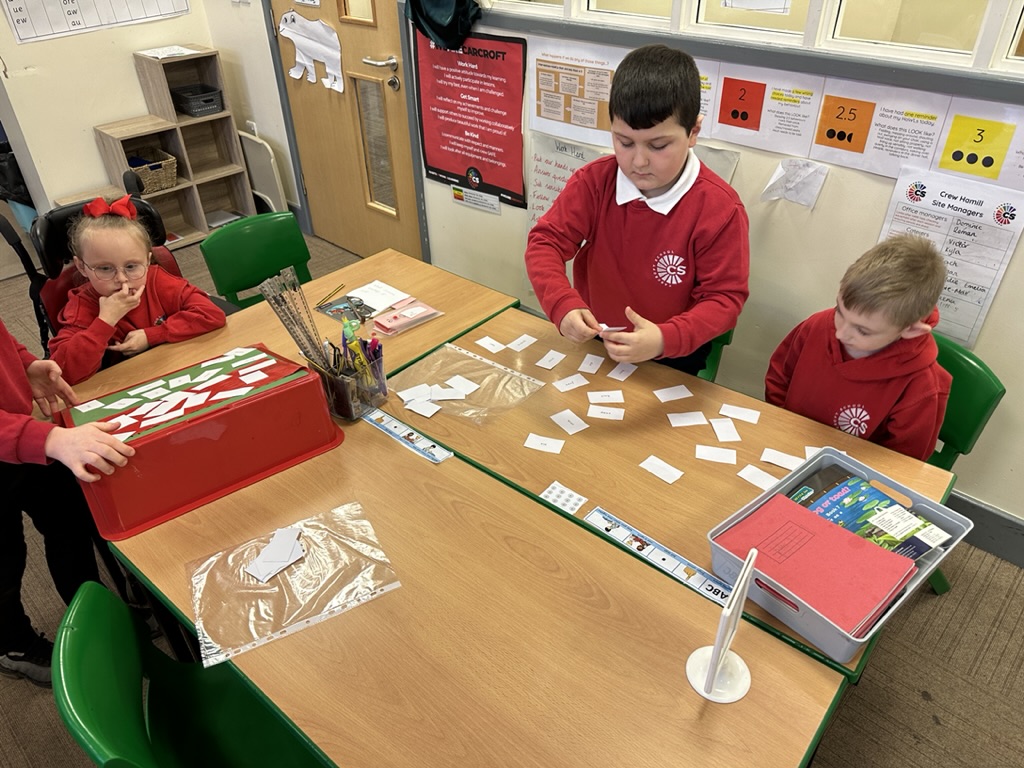


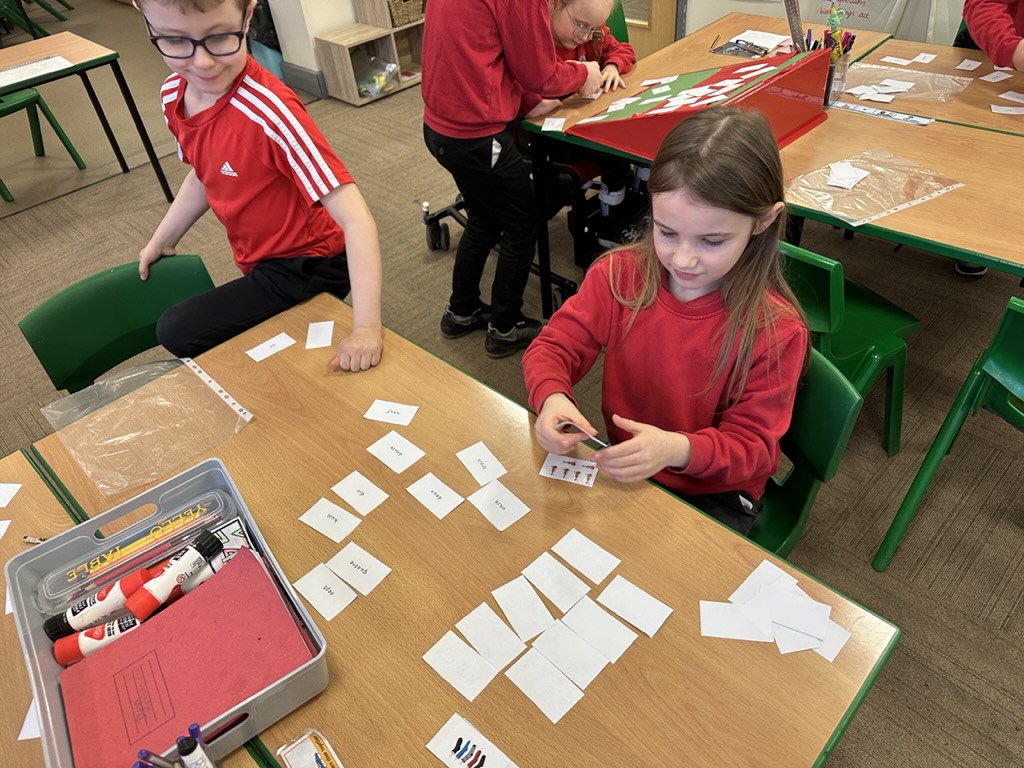

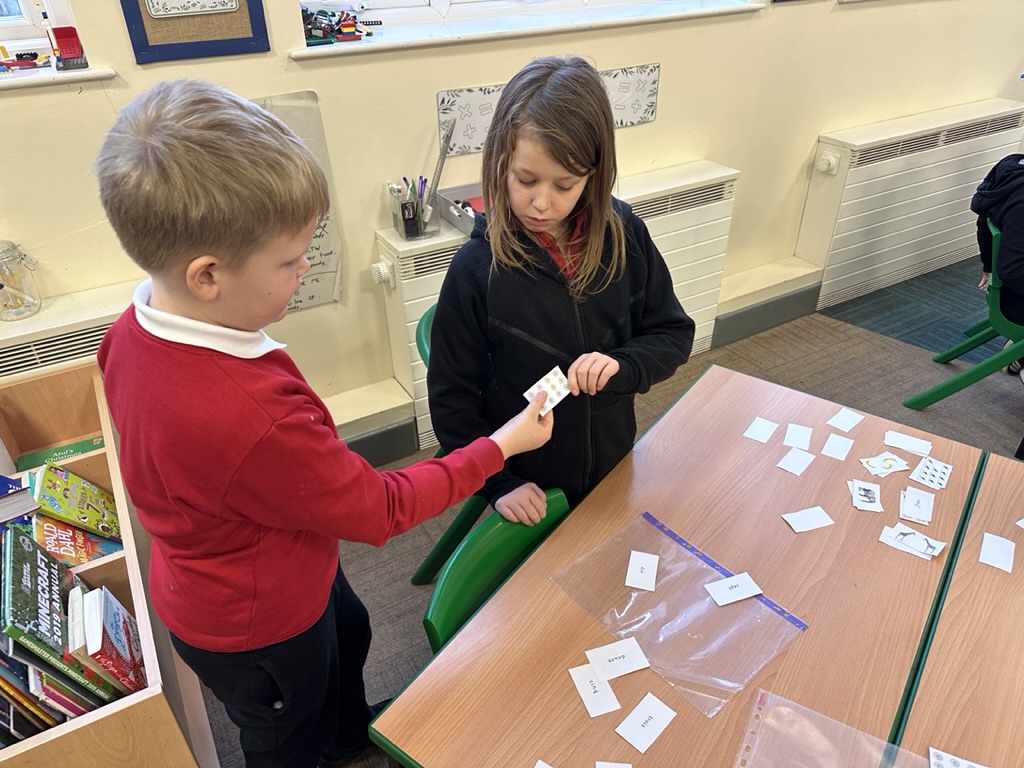
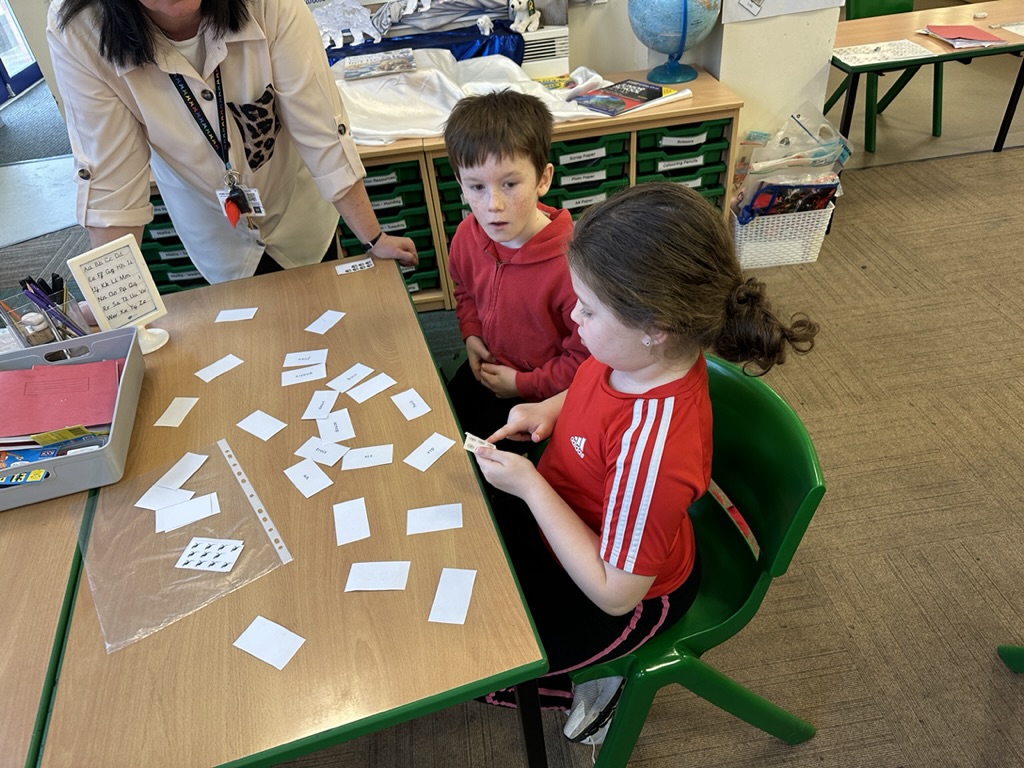
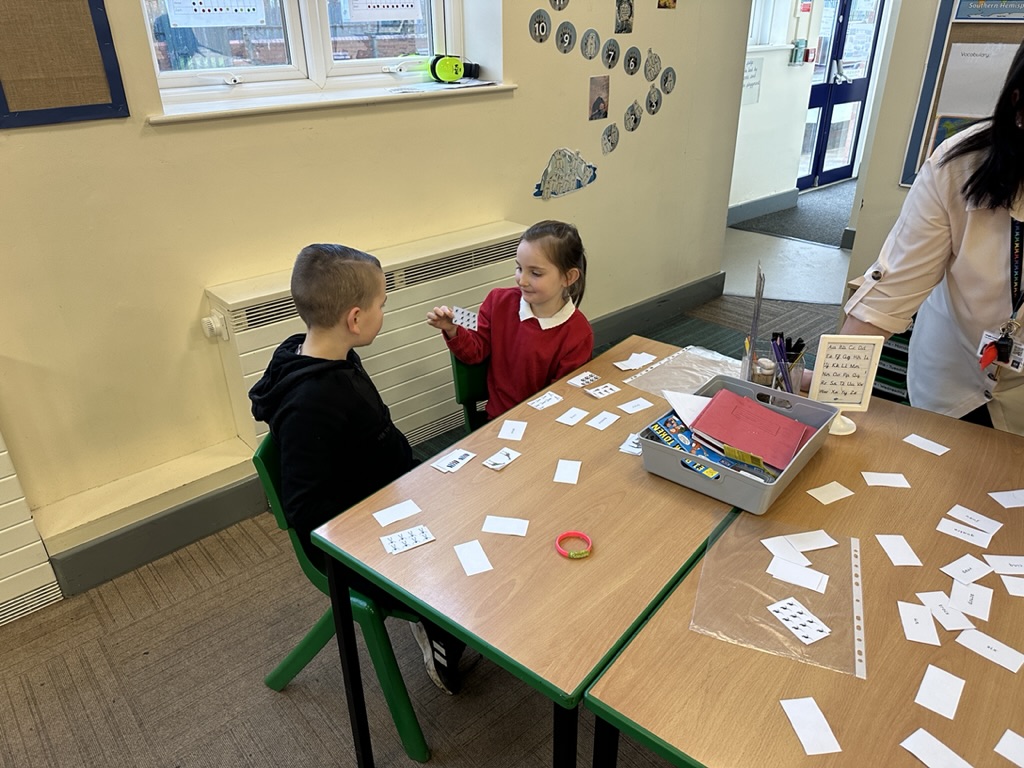
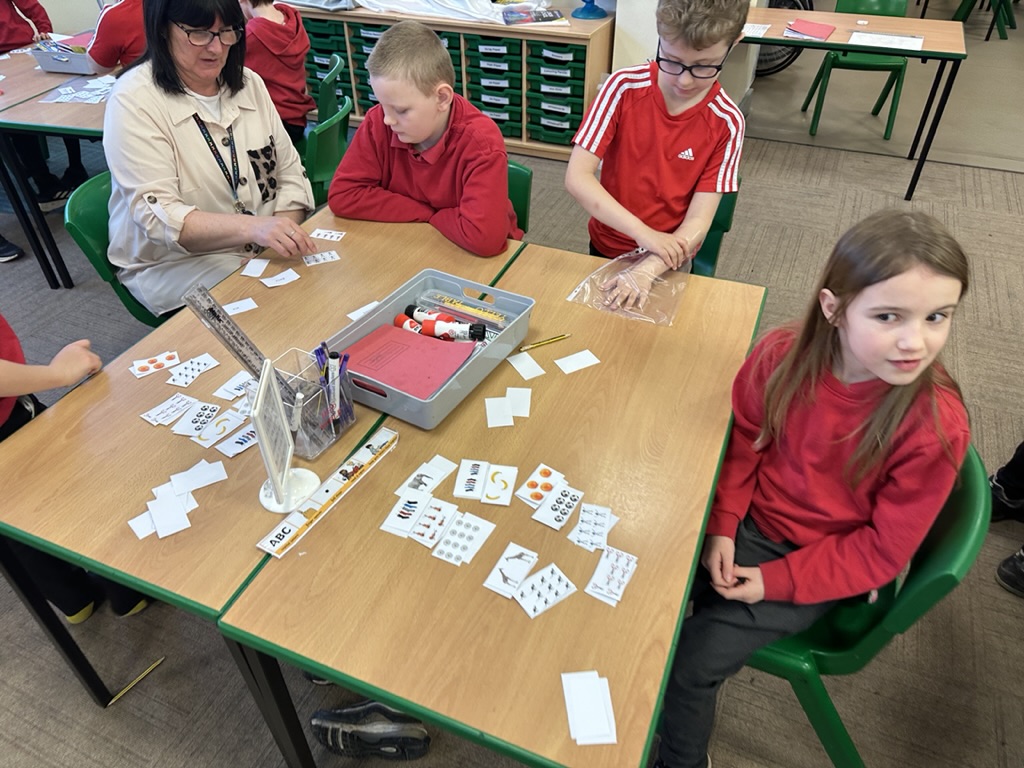
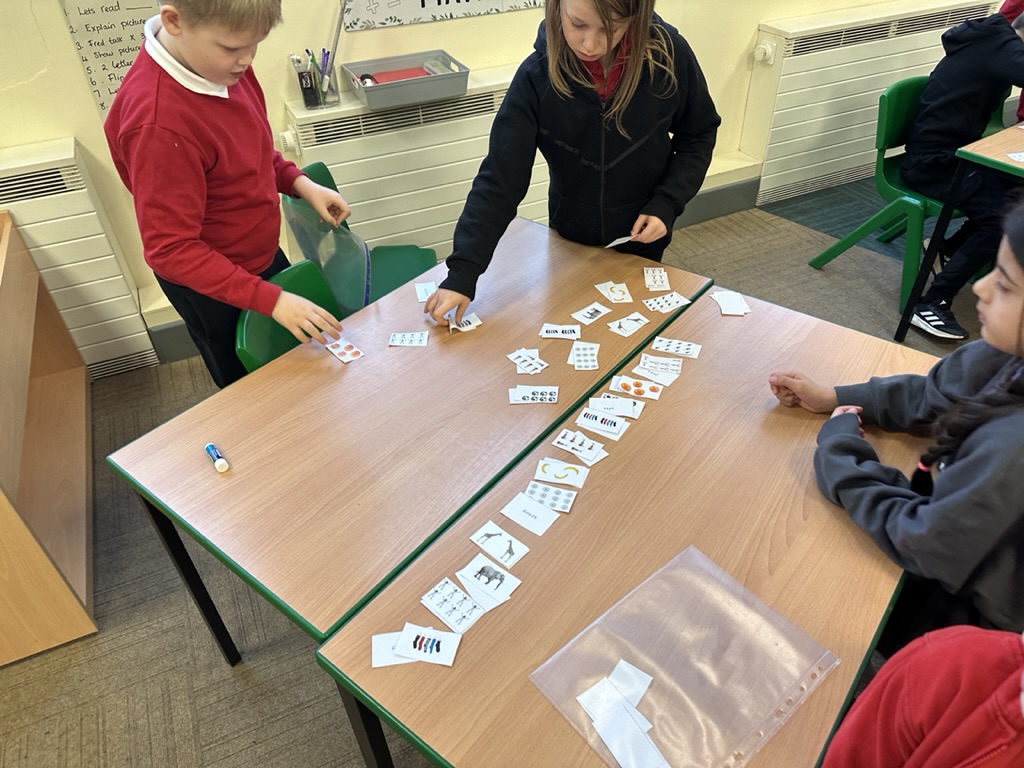
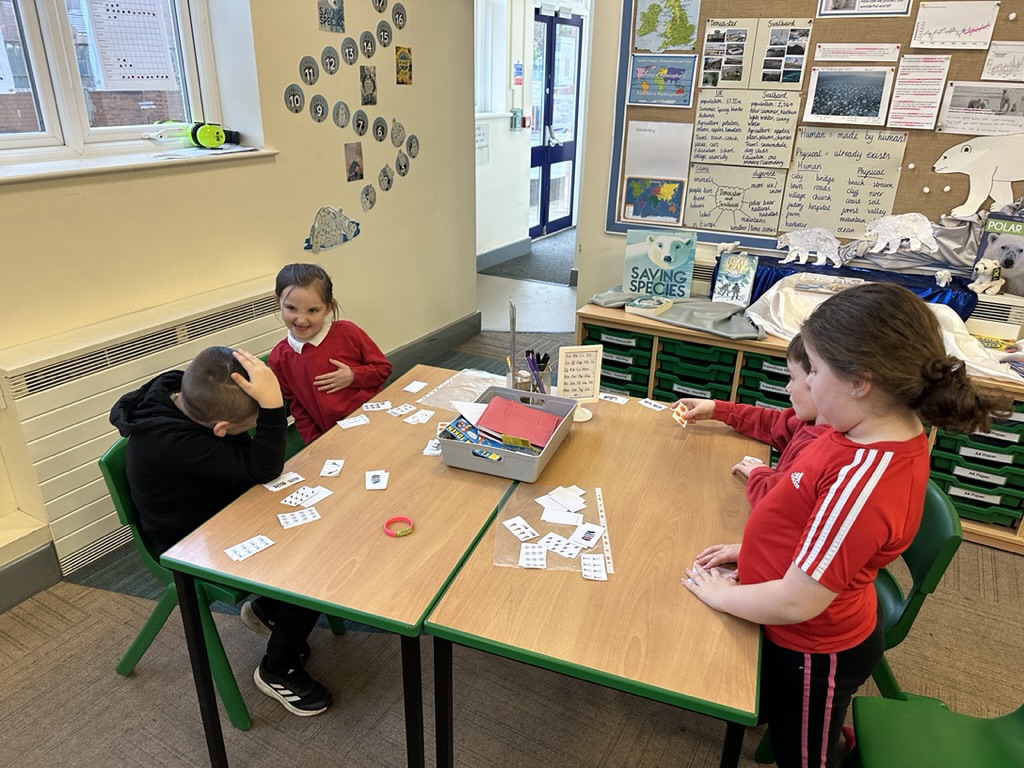
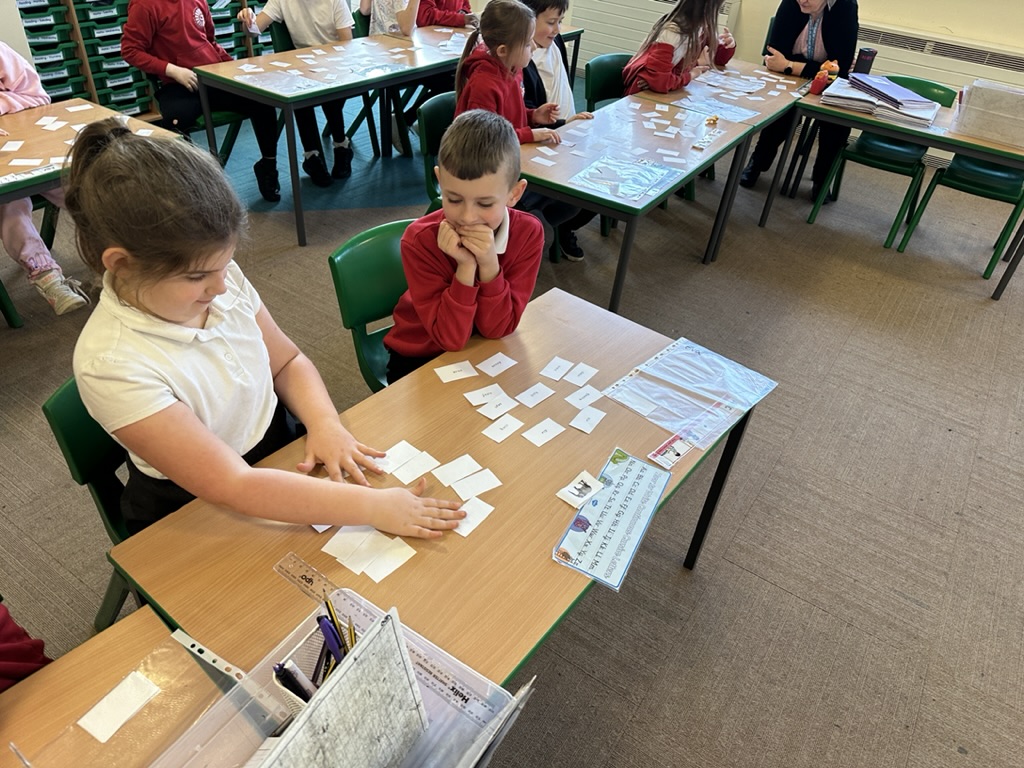
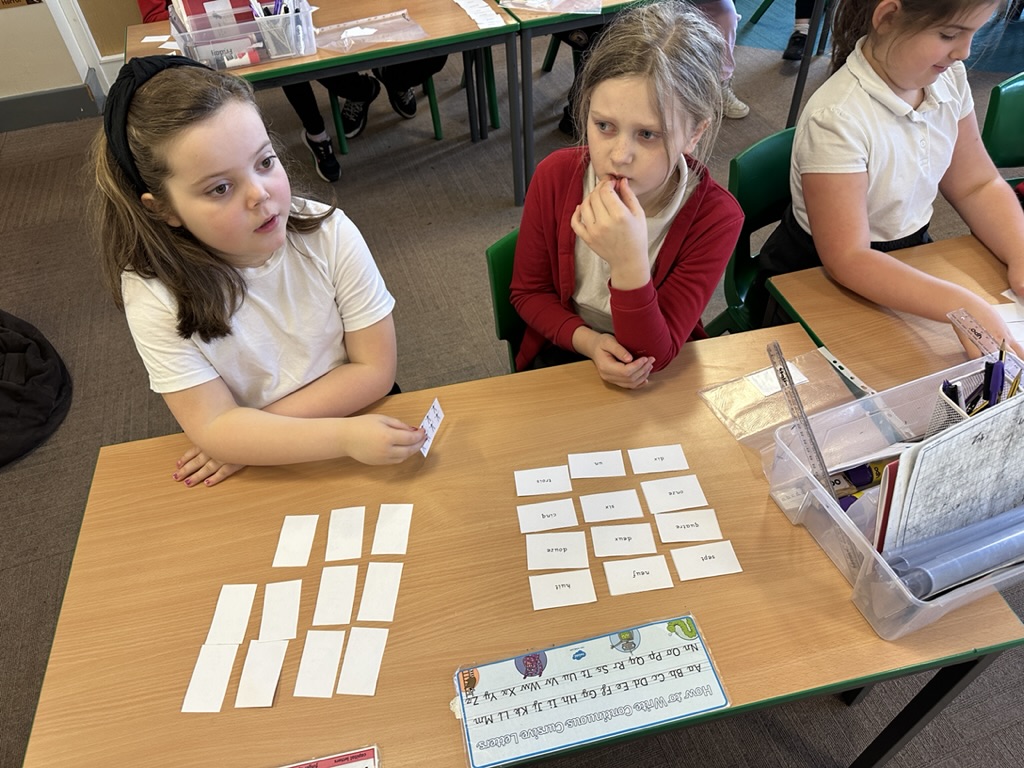
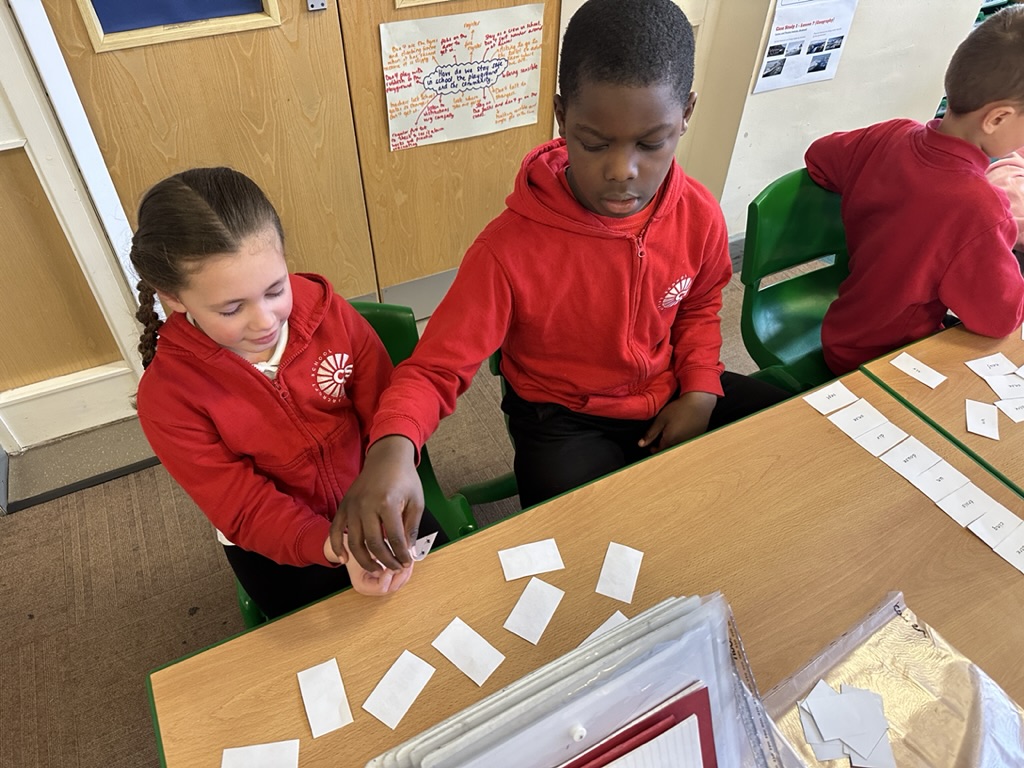
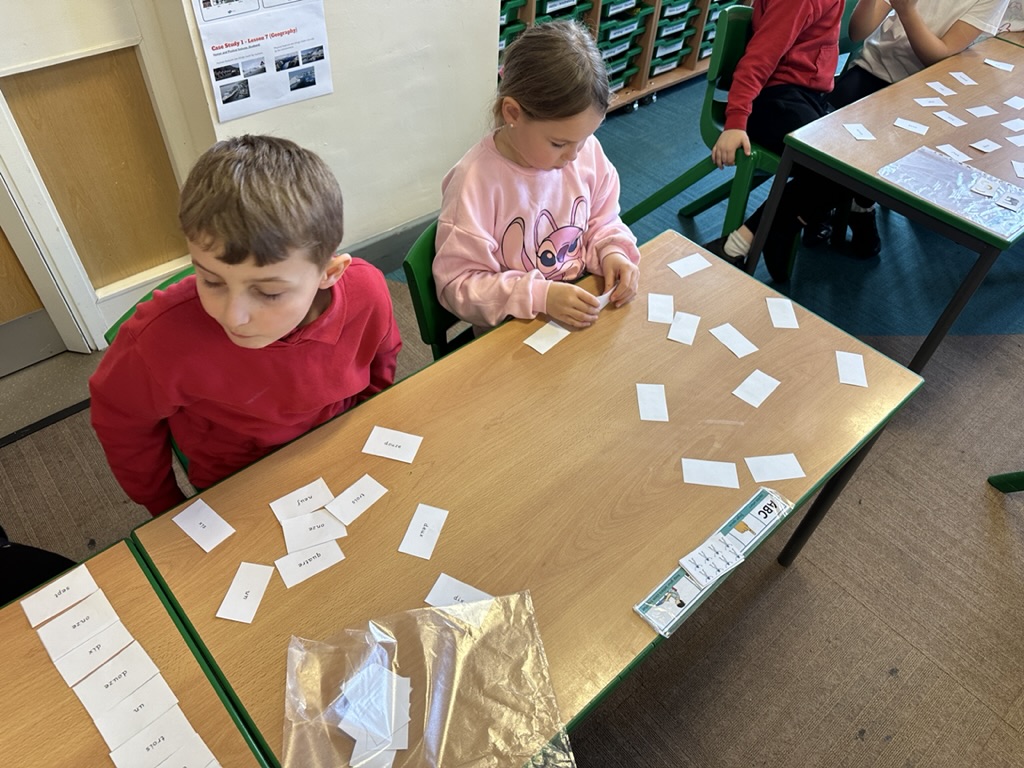

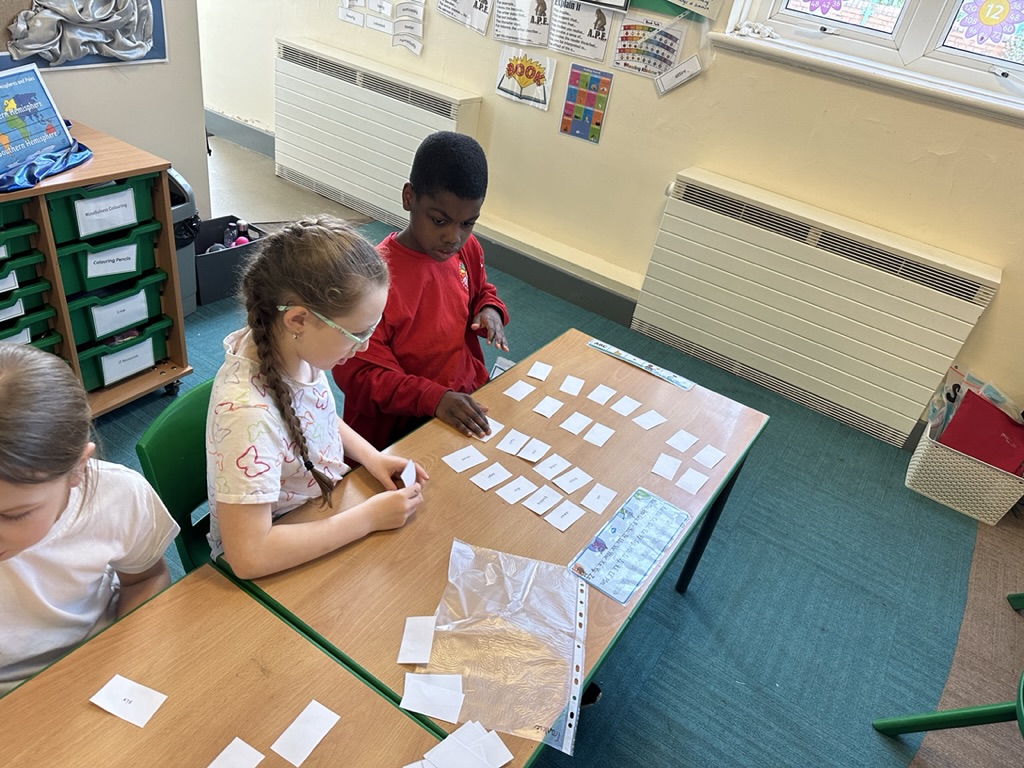
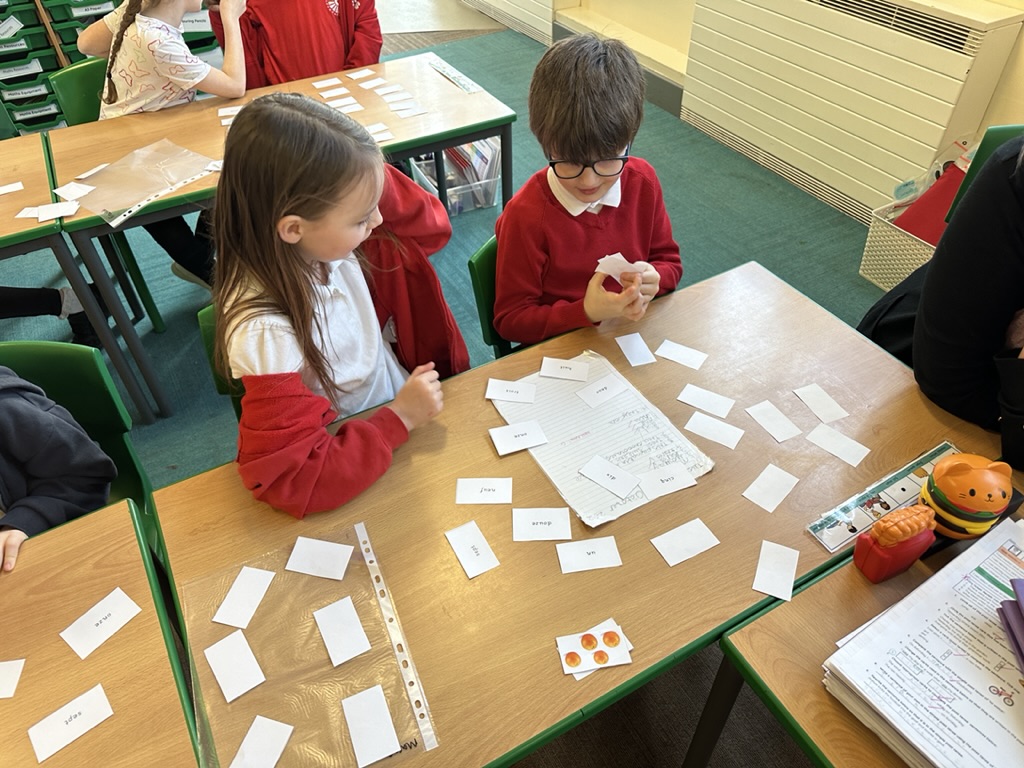



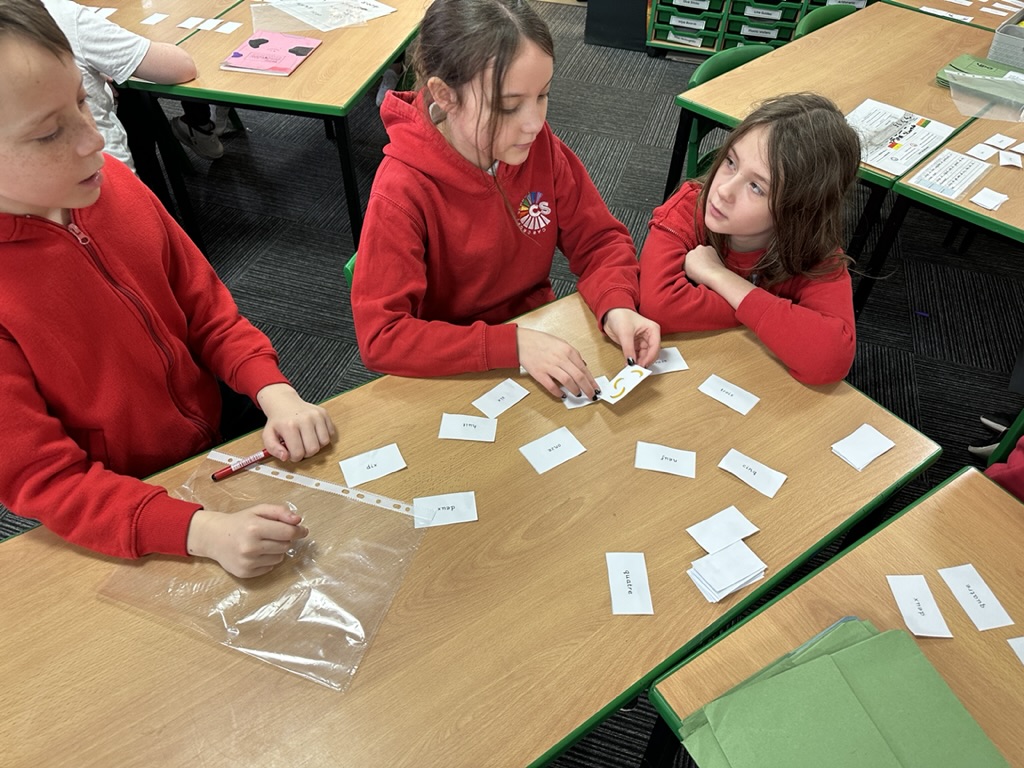
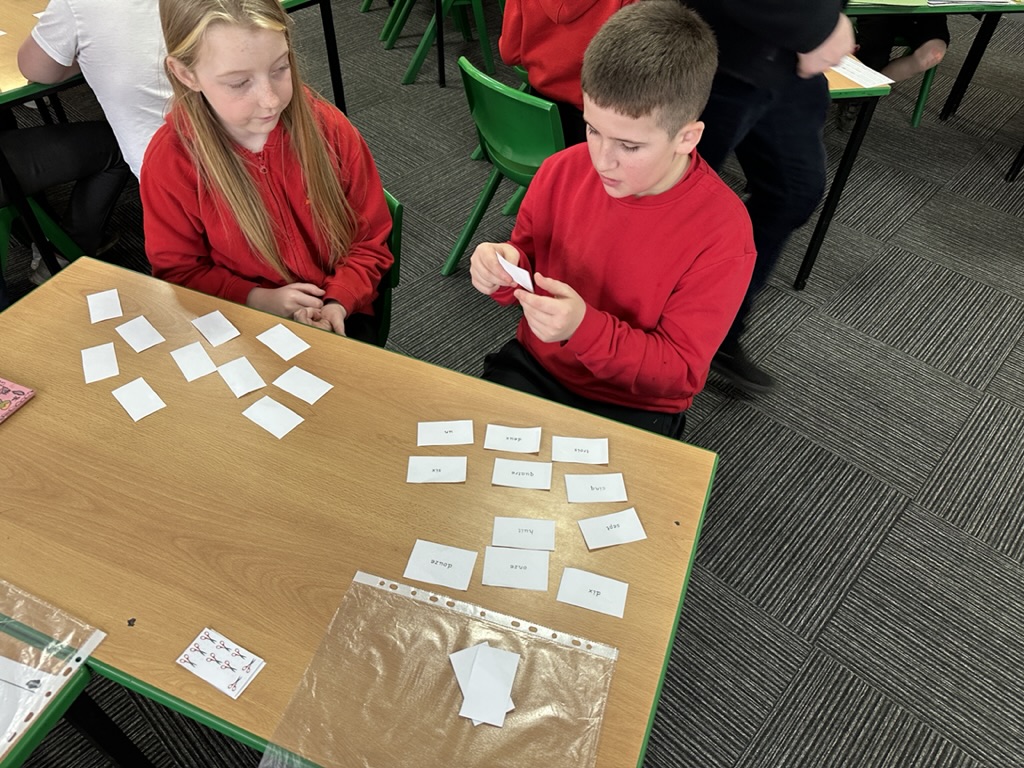

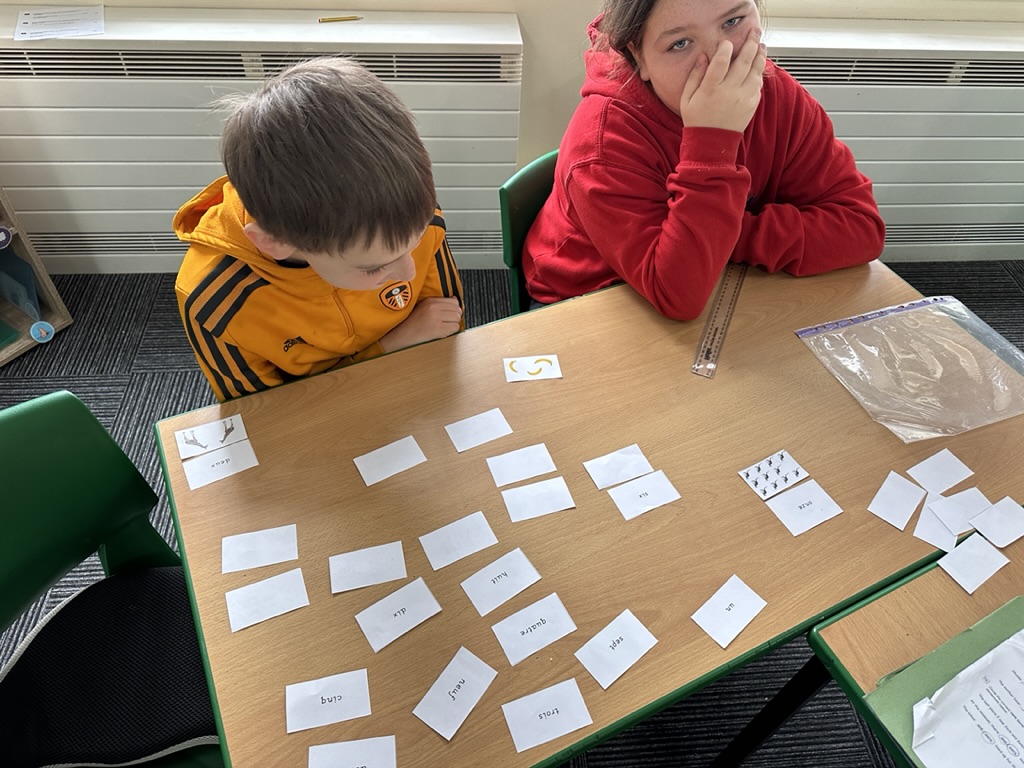
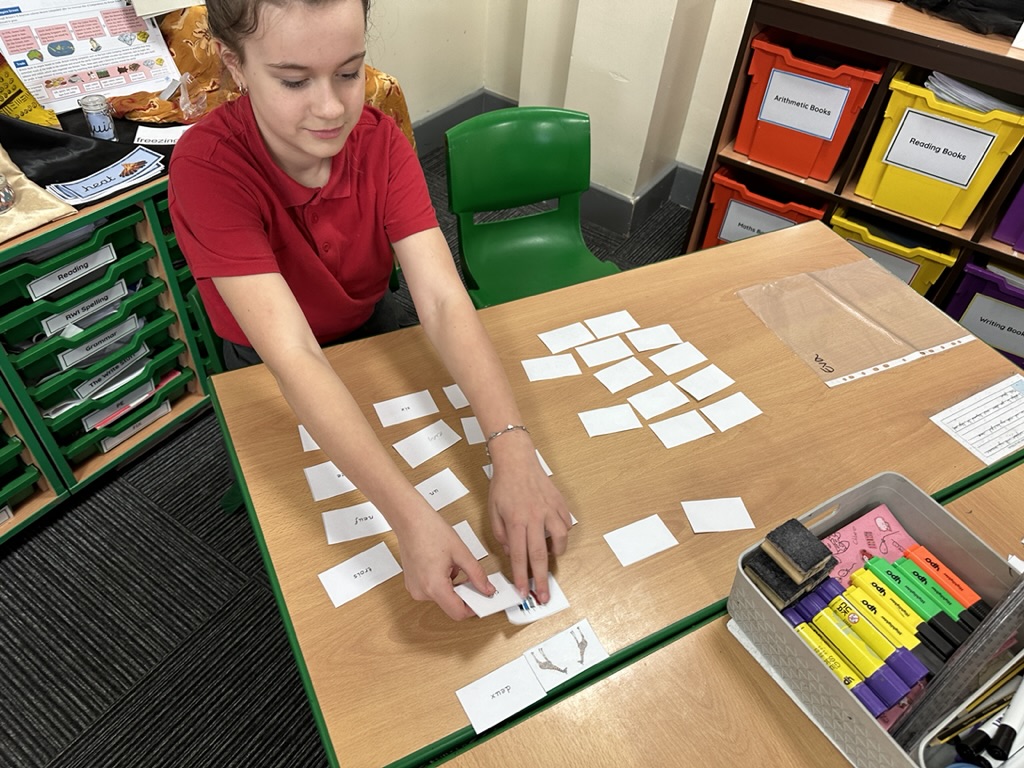
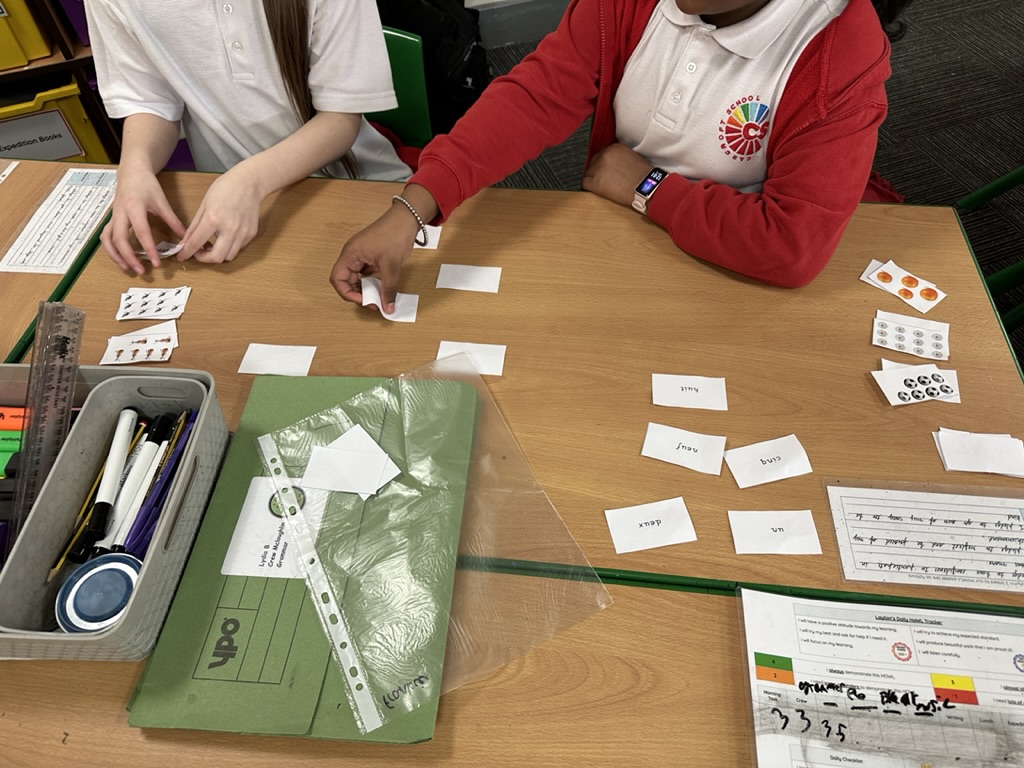


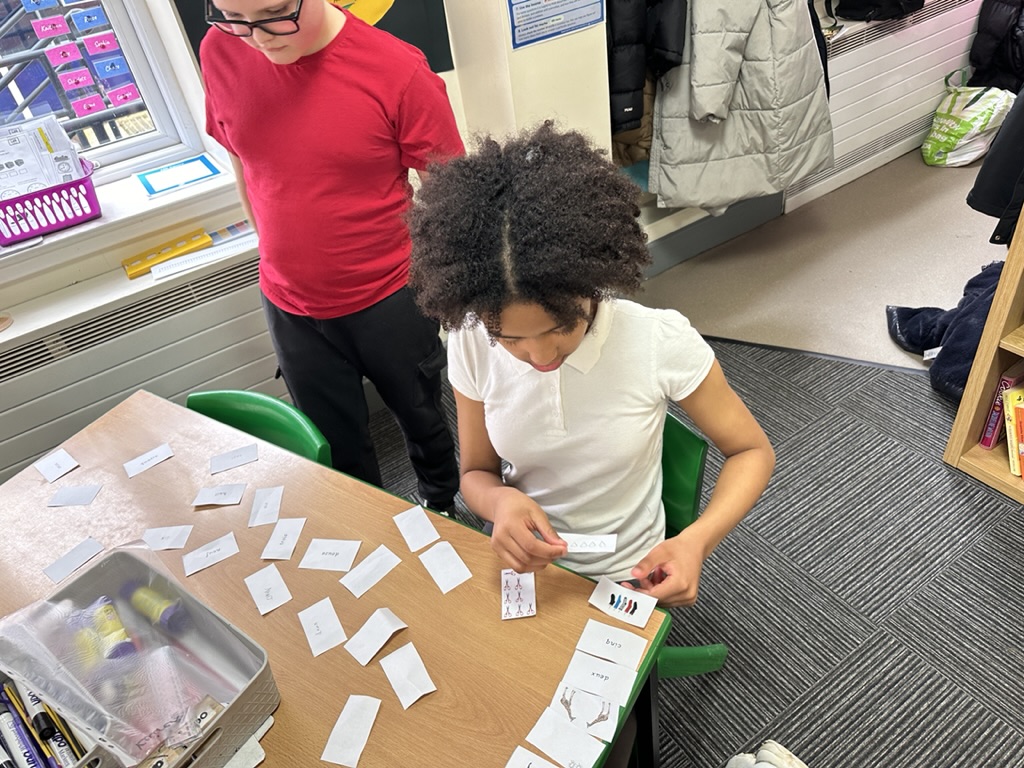
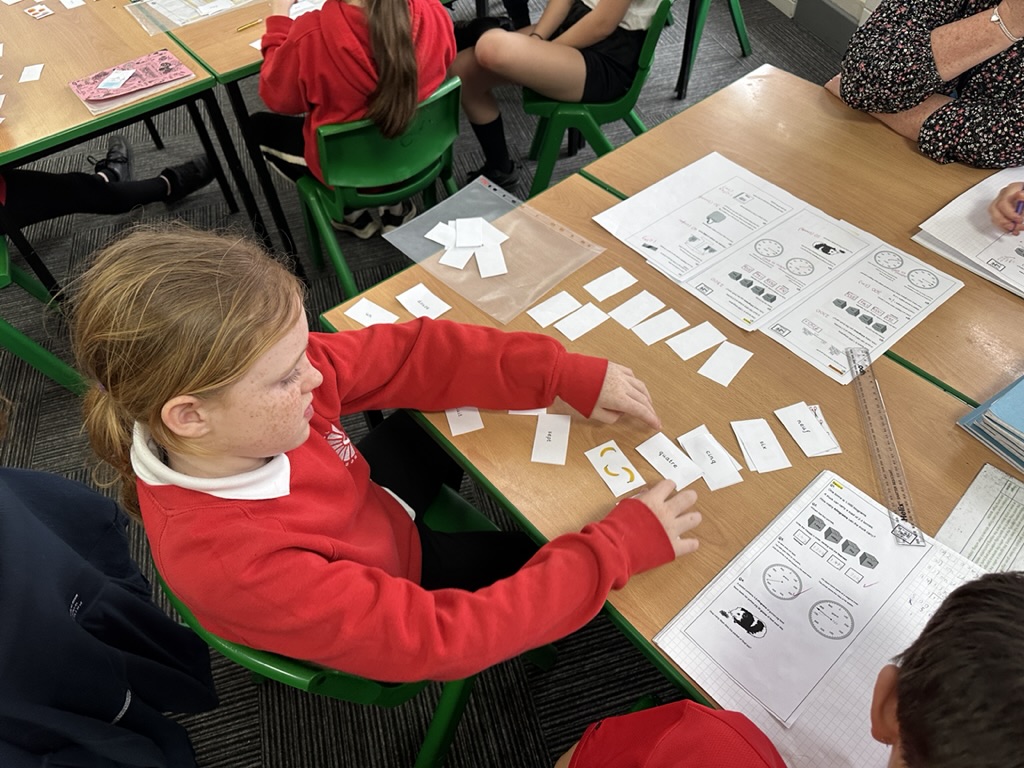
In French we have been looking at how to say our ages, as well as ask other people how old they are. We started by becoming language detectives, identifying areas of French that we already knew or could find cognates/near cognates for within a letter. We discussed what we could find out from the letter and key questions that had been asked. This helped us with working out particular phrases useful to our lesson.

We then looked at how to say ‘I am ____ years old’ in French. We added an amount of candles to the image on the board and practised the pronunciation of the phrase ‘J’ai _____ ans’. We then looked at how to ask someone how old they are in French before asking and answering the questions using our new French knowledge.
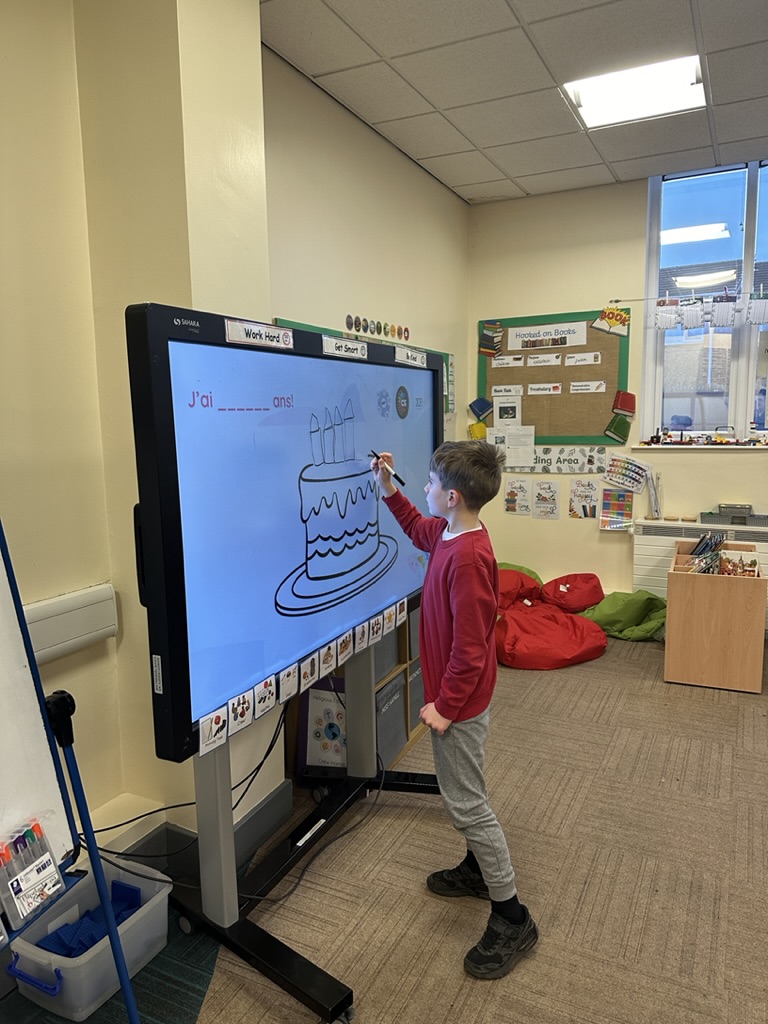
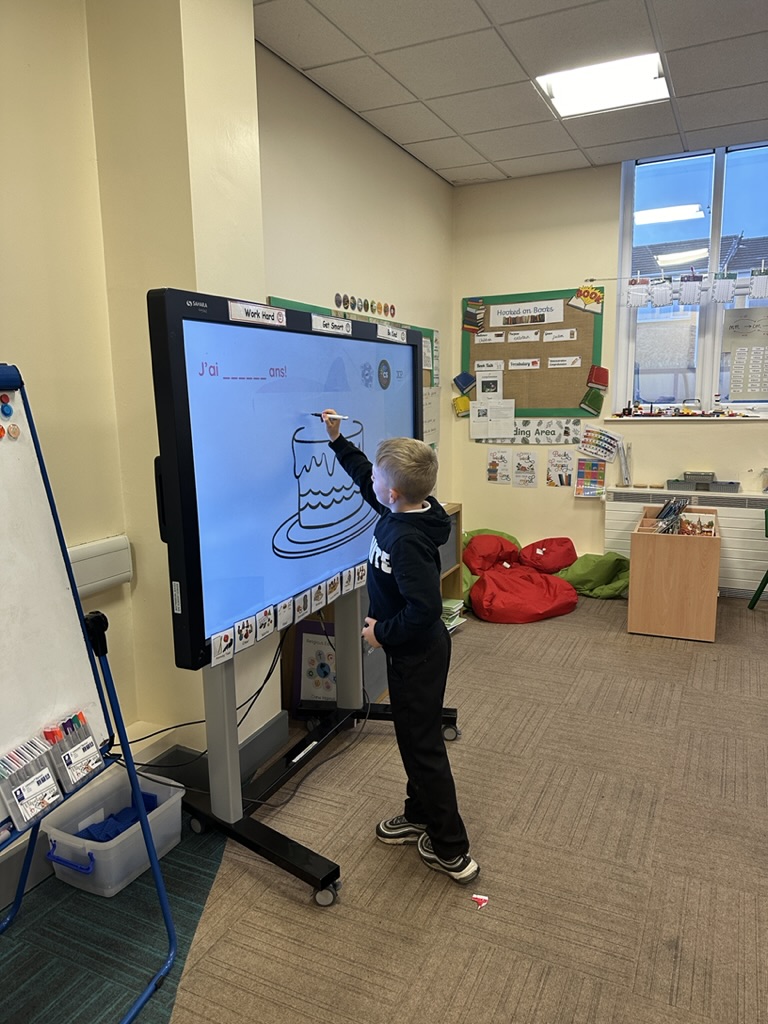


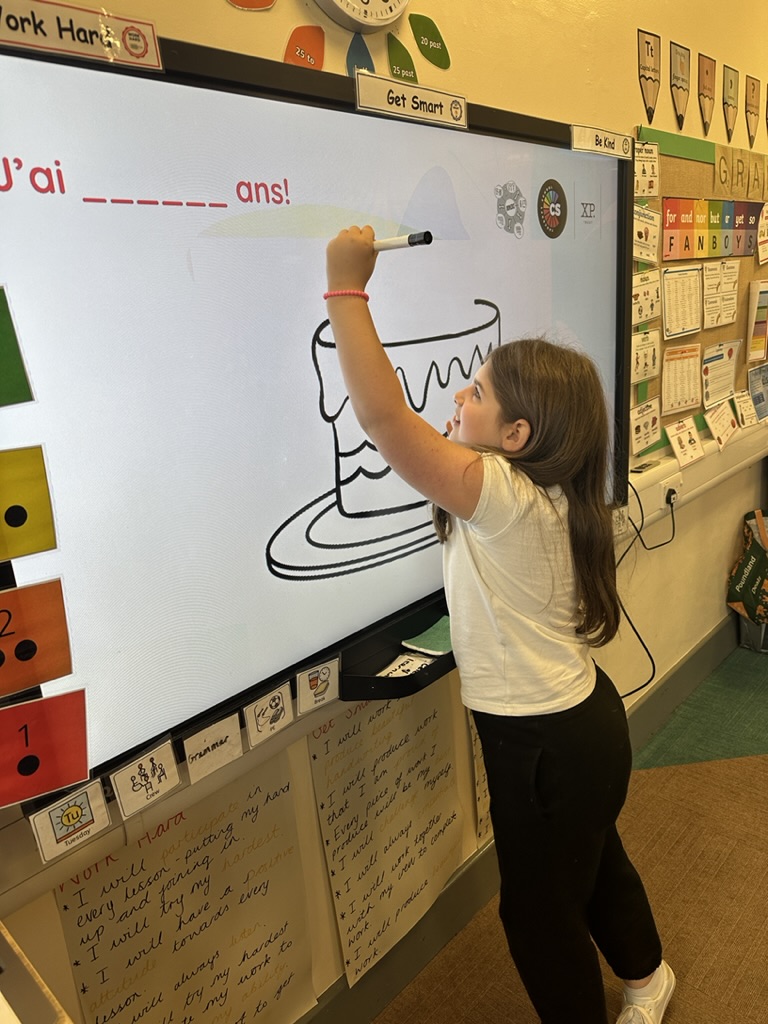

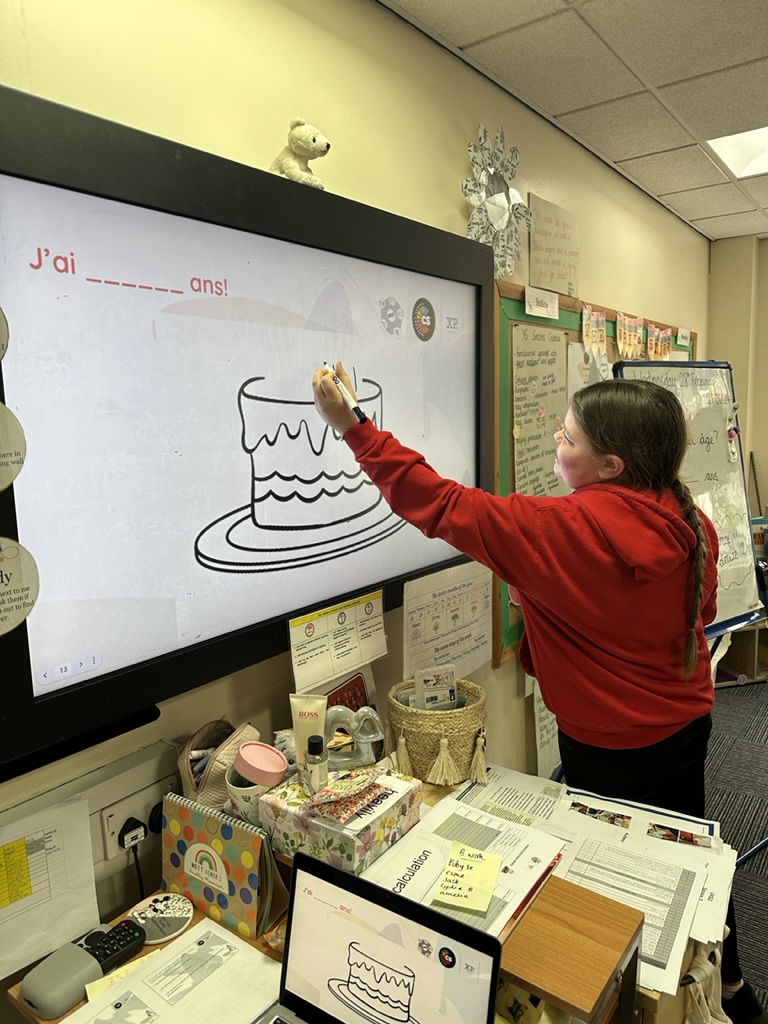
We then played some games where we had to listen carefully to either our teacher or our crew members to identify what they were telling us.
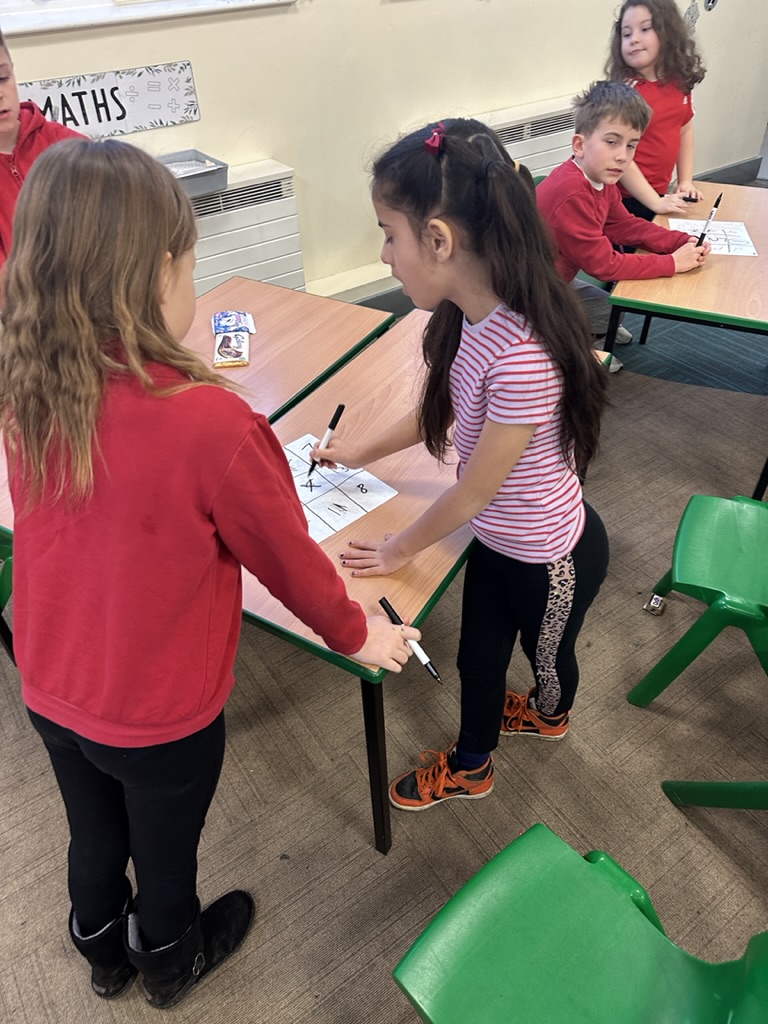



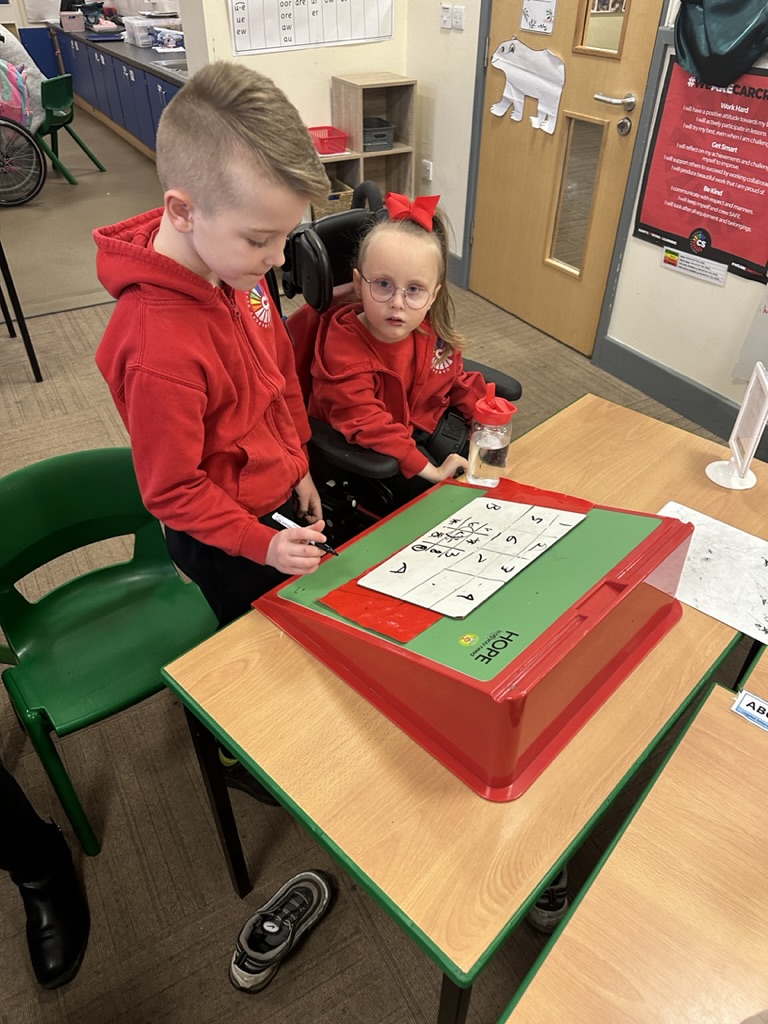


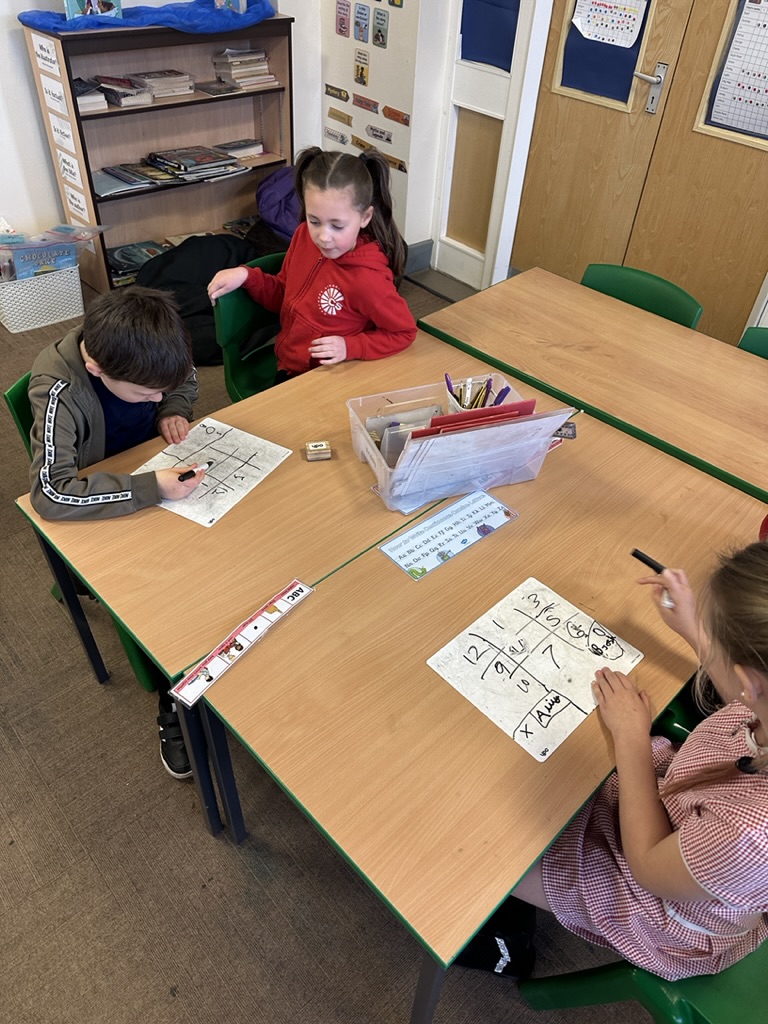
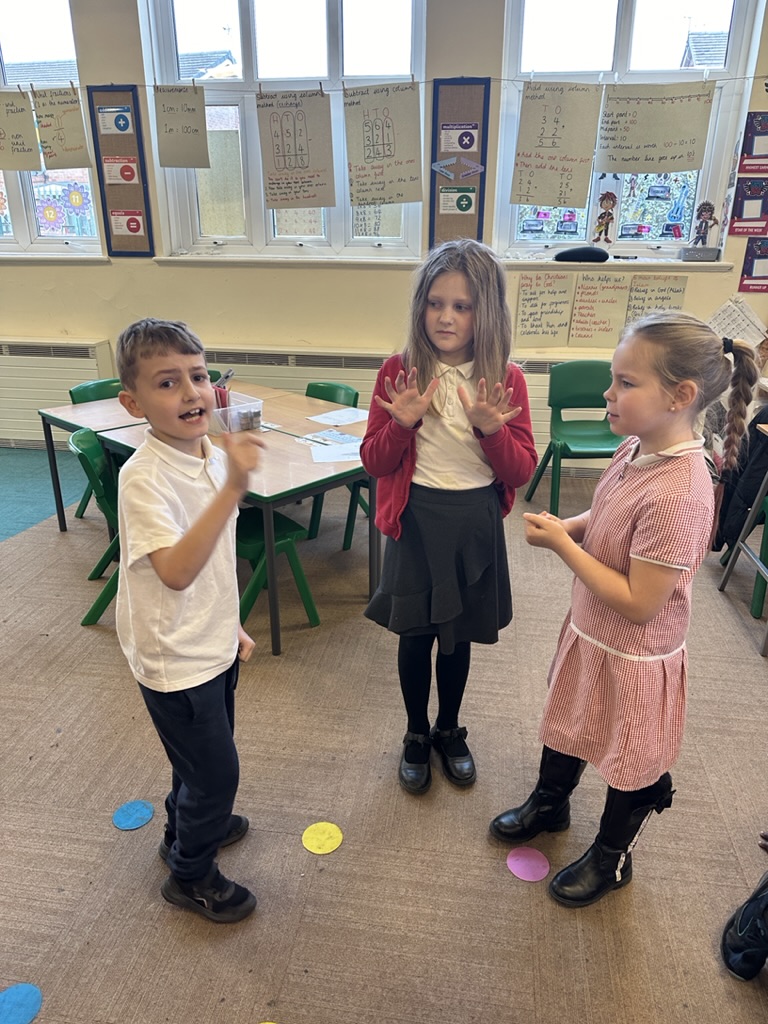
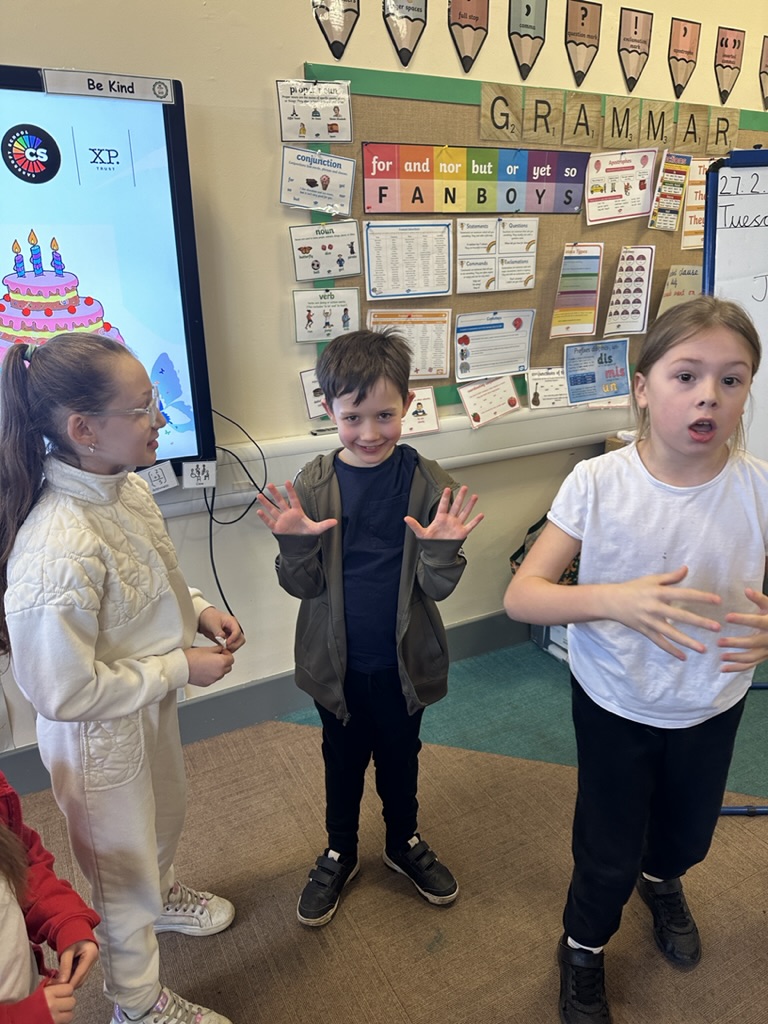


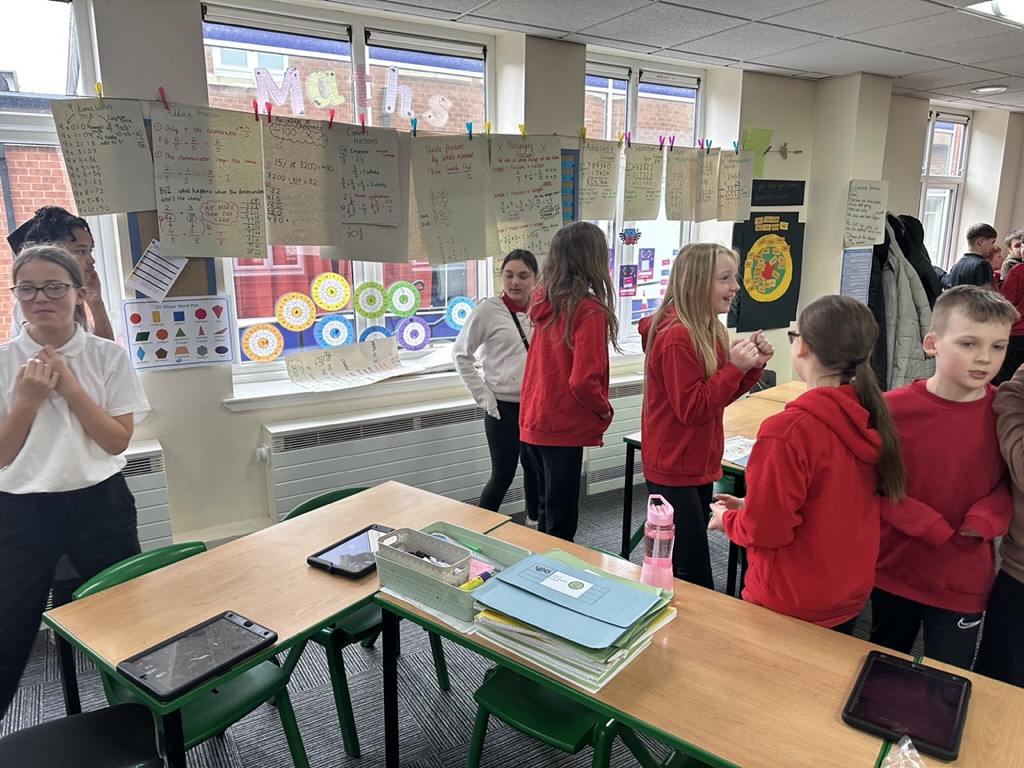
To develop our work on clothing items in French, we looked at how we would give an opinion. We talked about the French for ‘I like’ and ‘I do not like’ and applied this by verbalising whether we liked different outfits displayed on the board. We then began to think about our understanding of the terminology, as well as looking at applying this to writing in French. We collectively created a crew clothing catalogue and each designed an outfit and then wrote sentences to describe it, thinking carefully about whether it was a masculine or feminine word and the sentence structure needed to make the sentence make sense in French.

